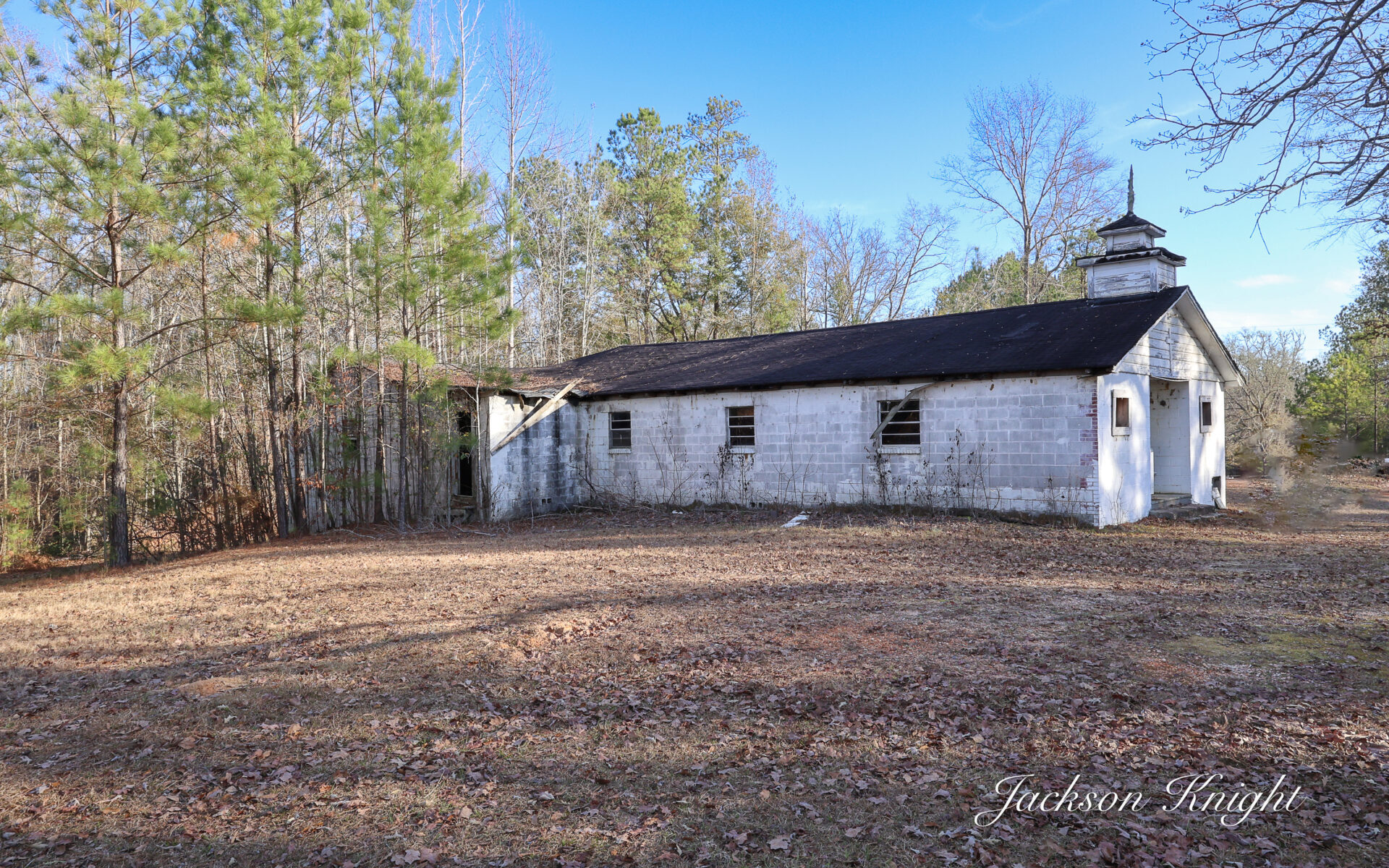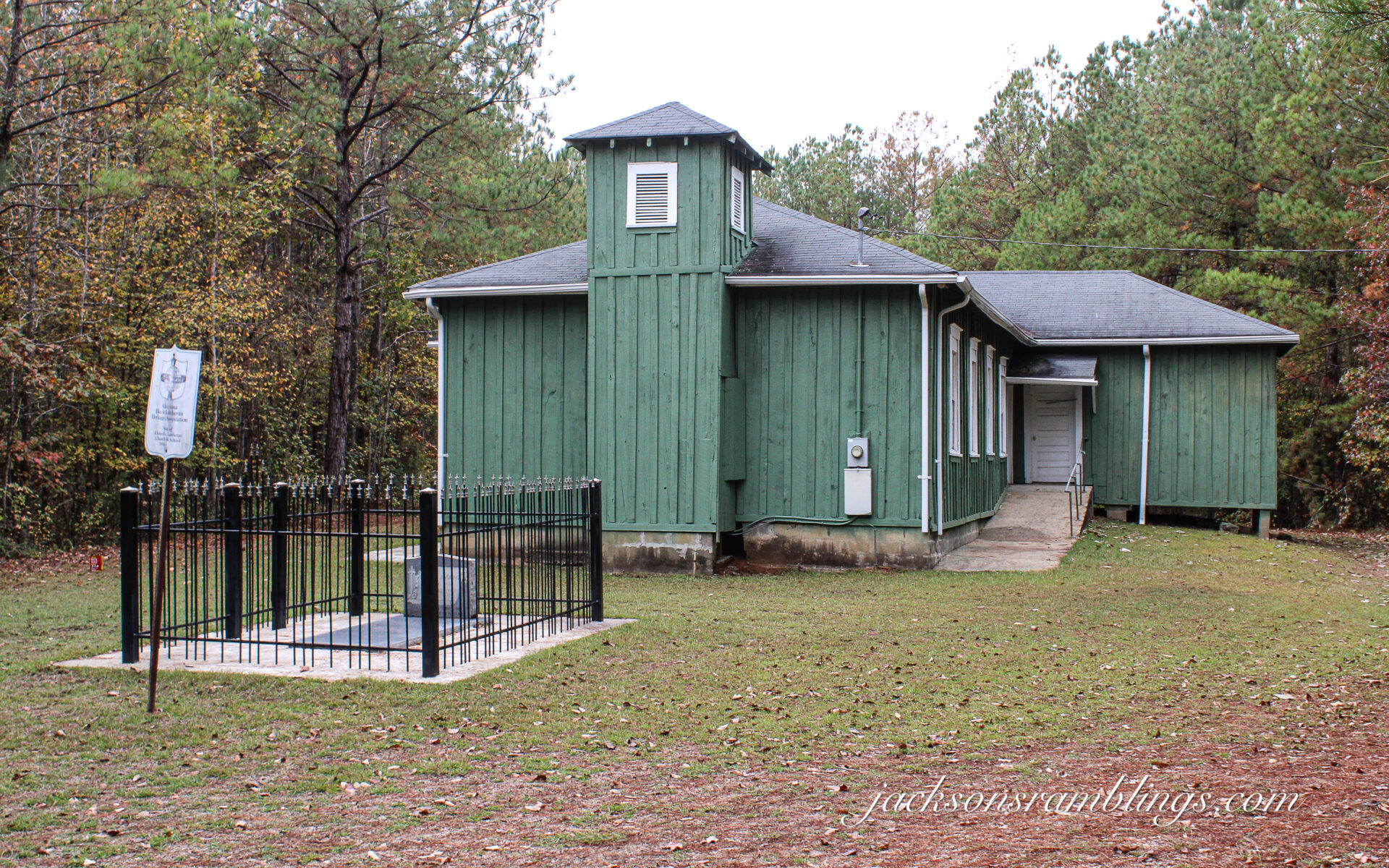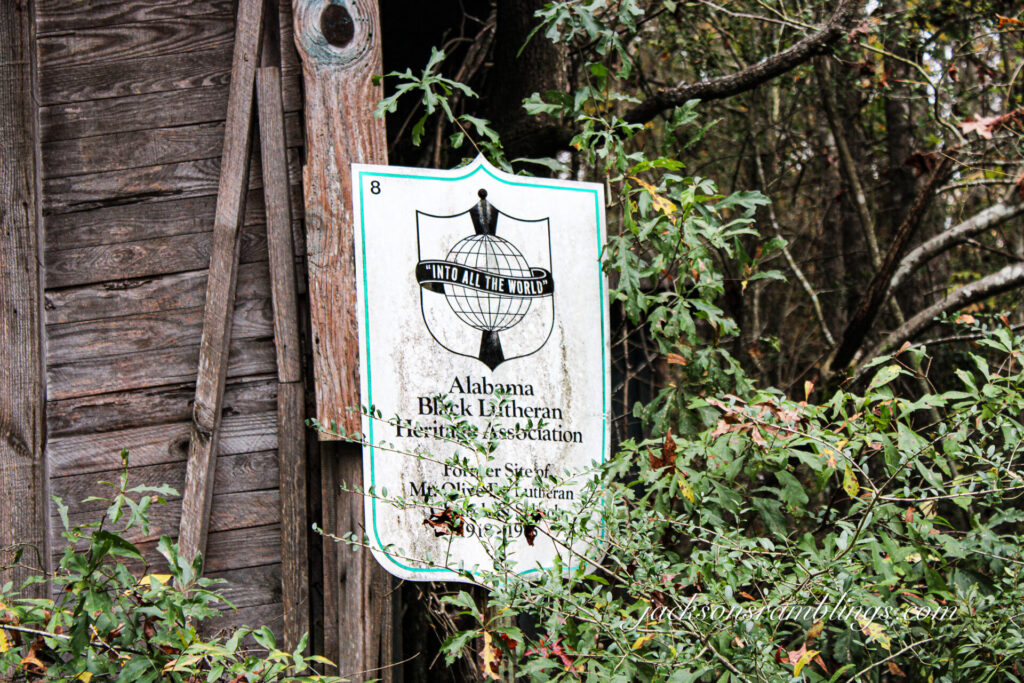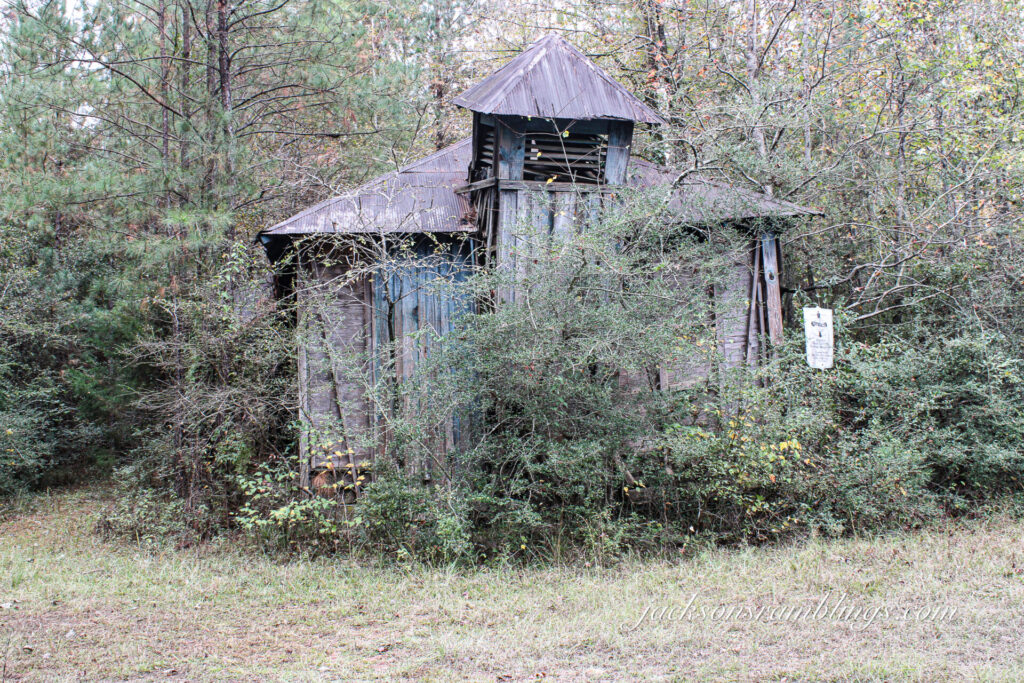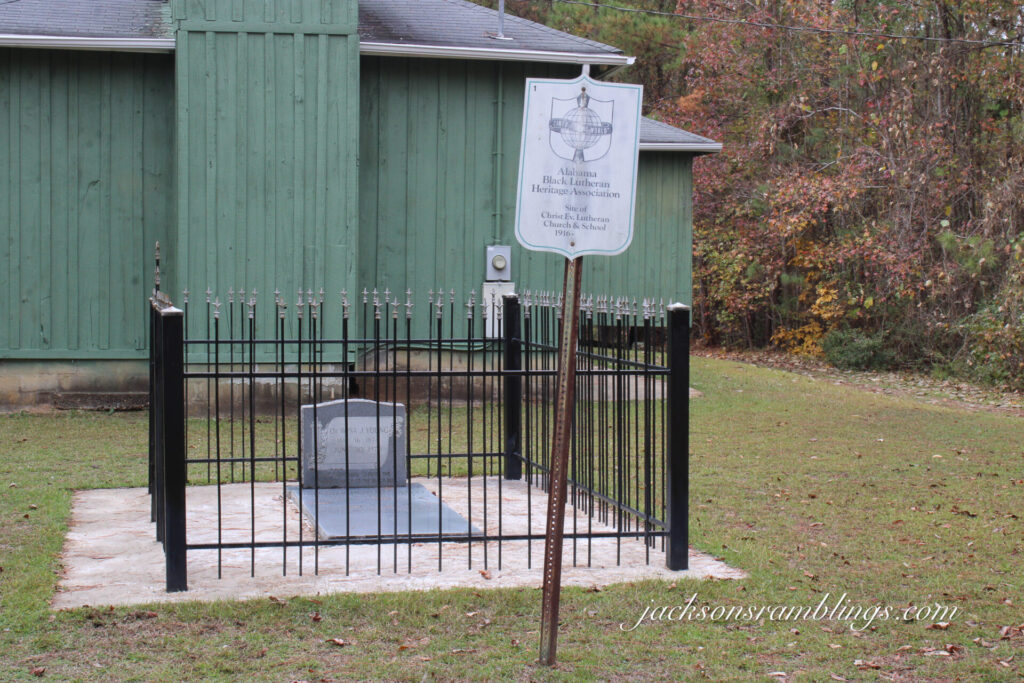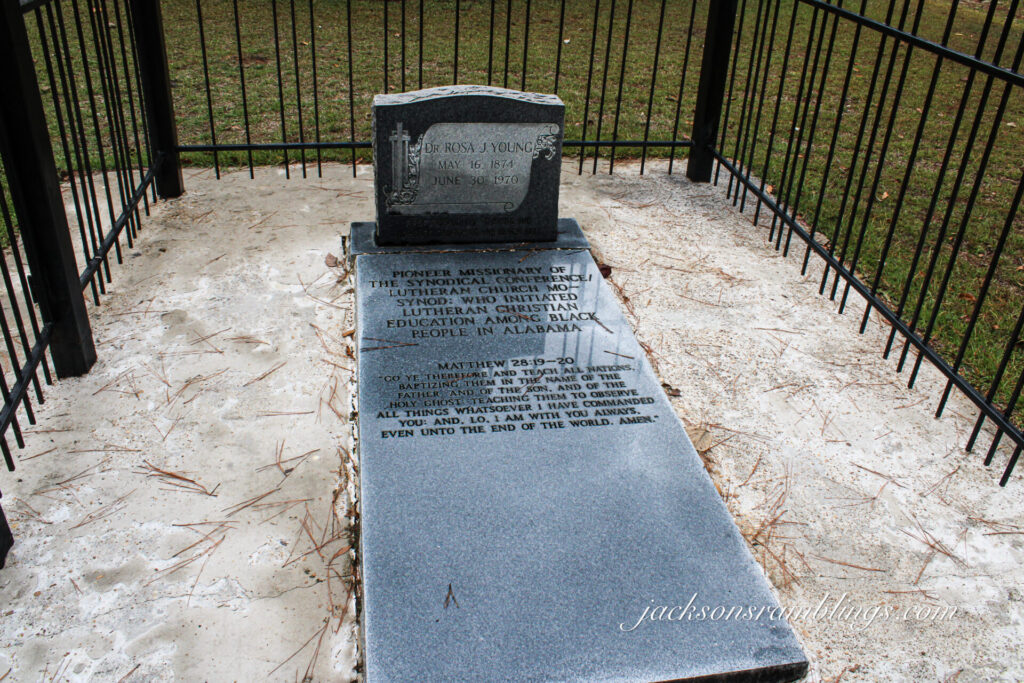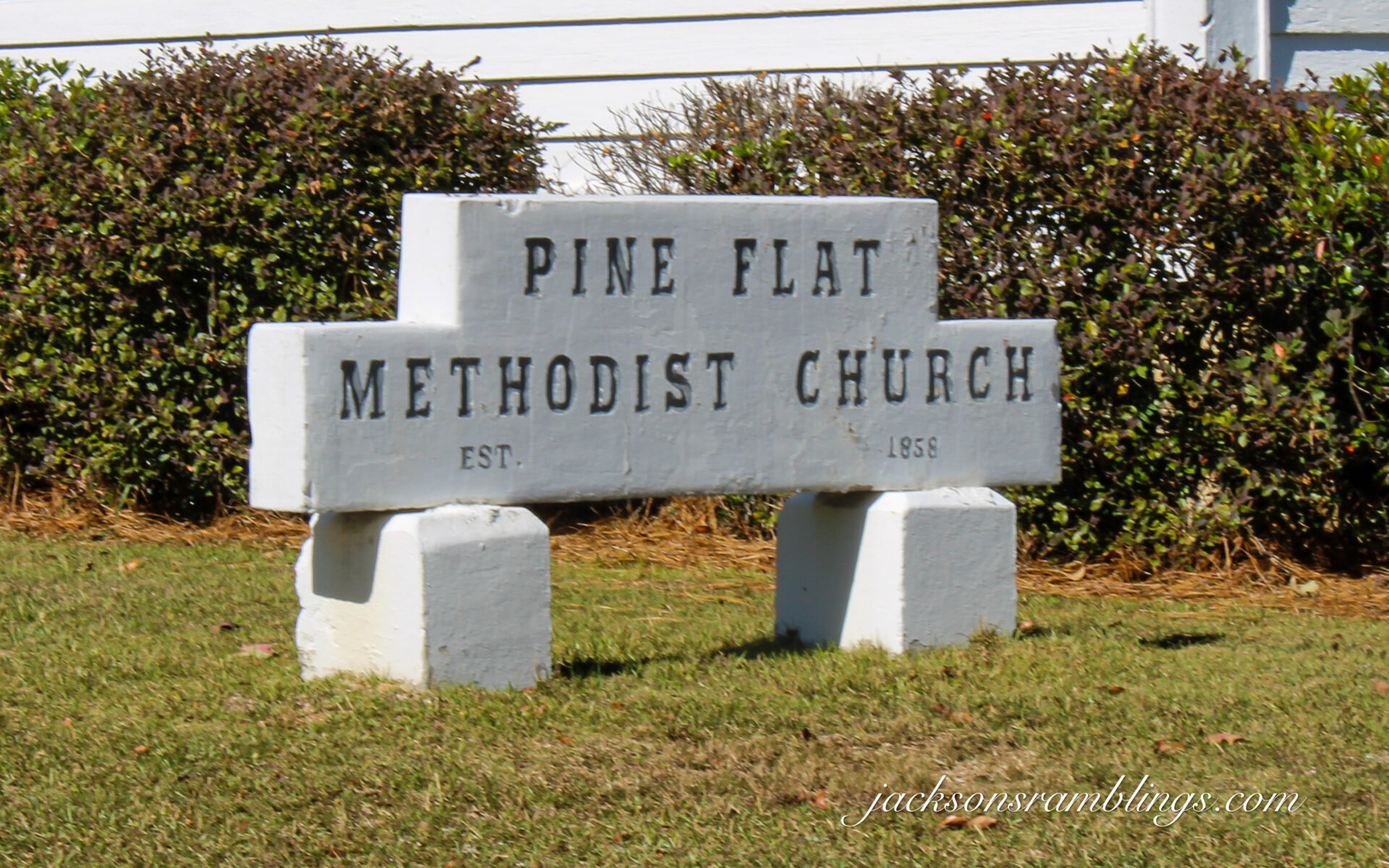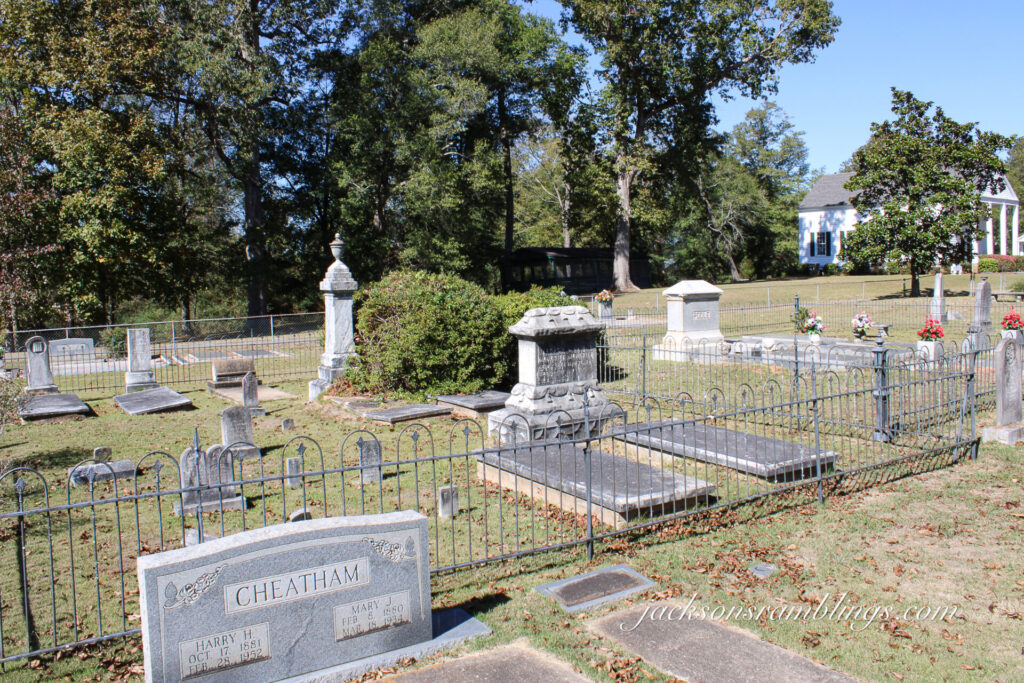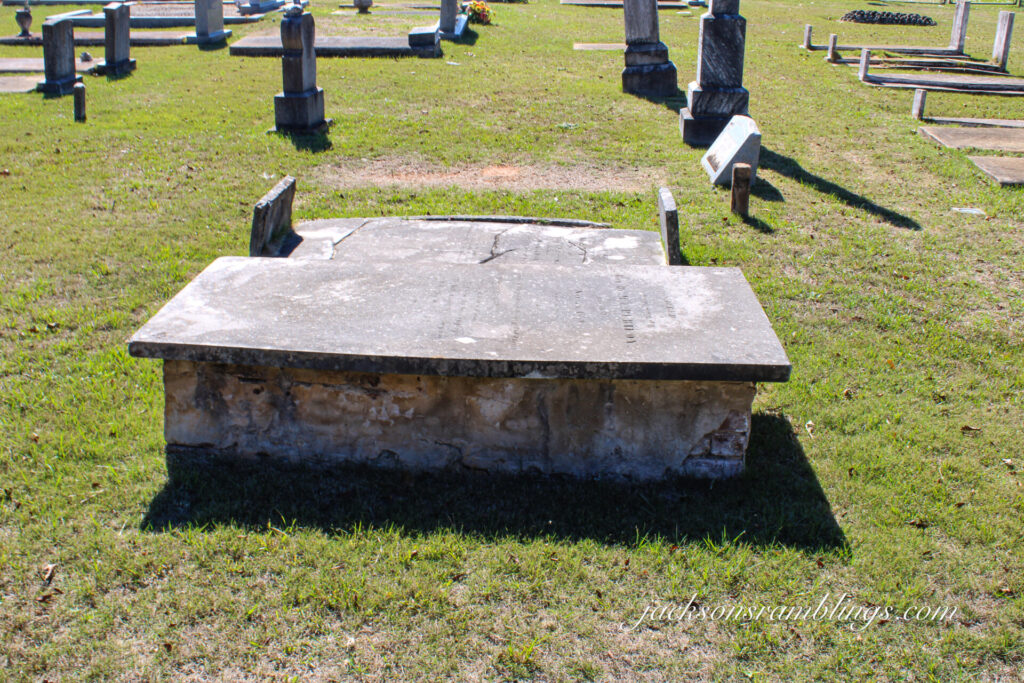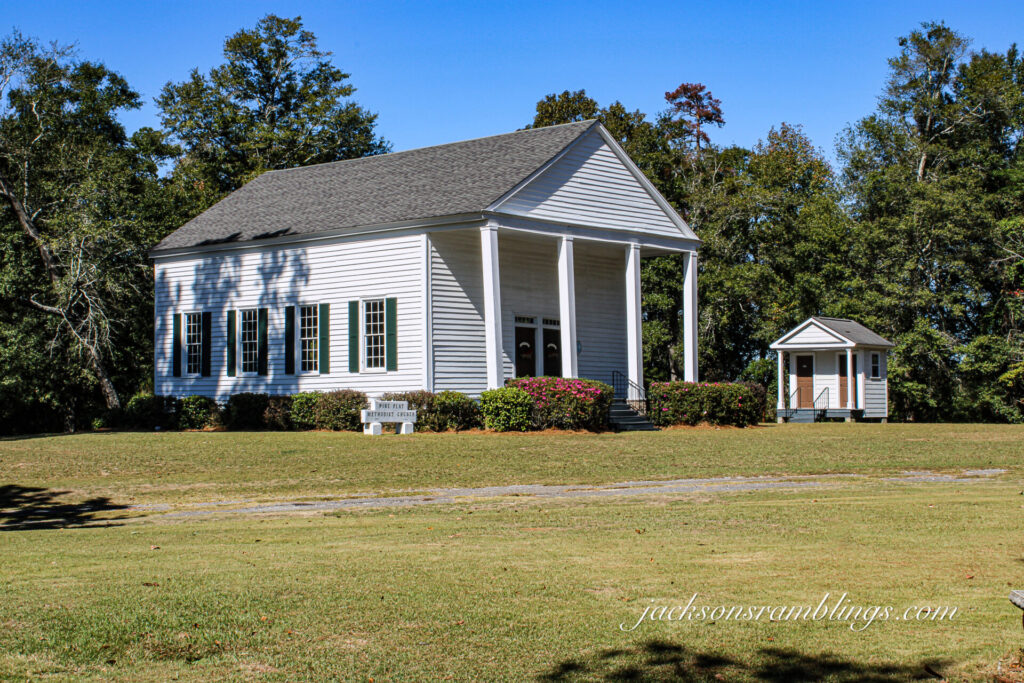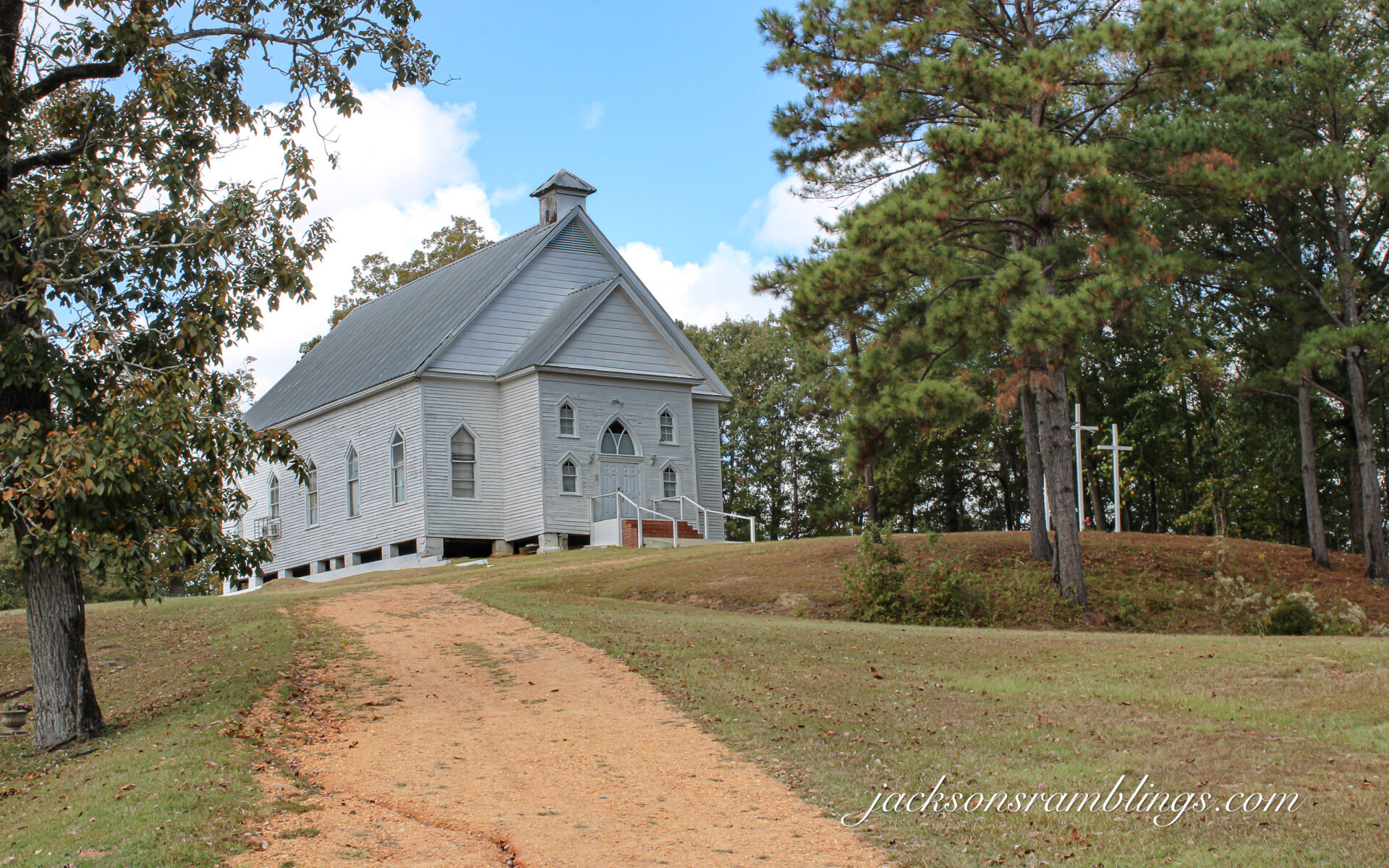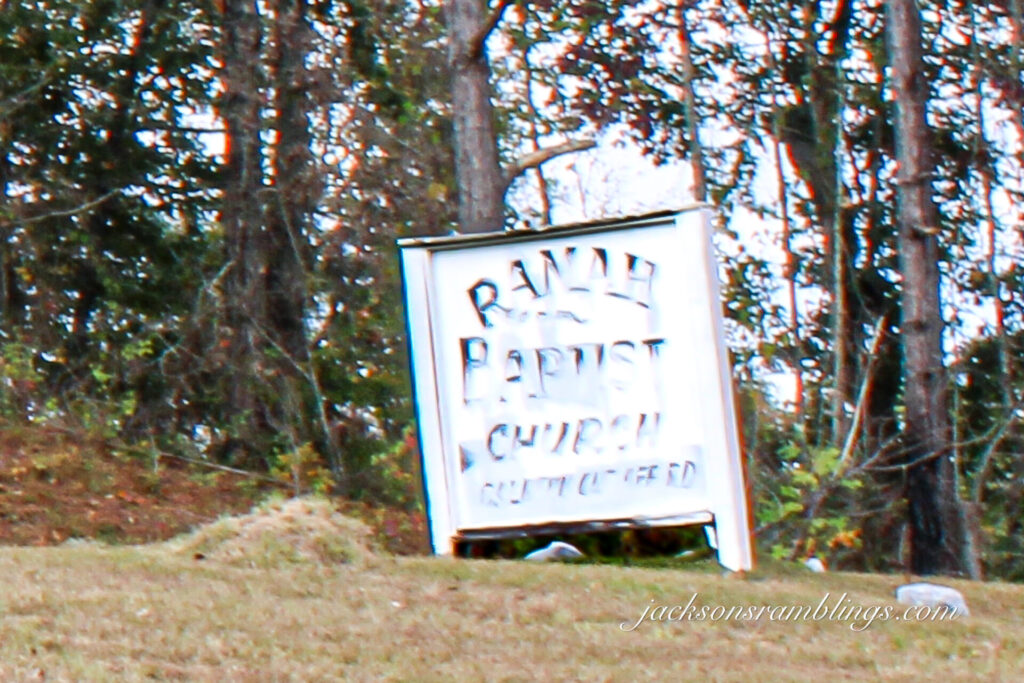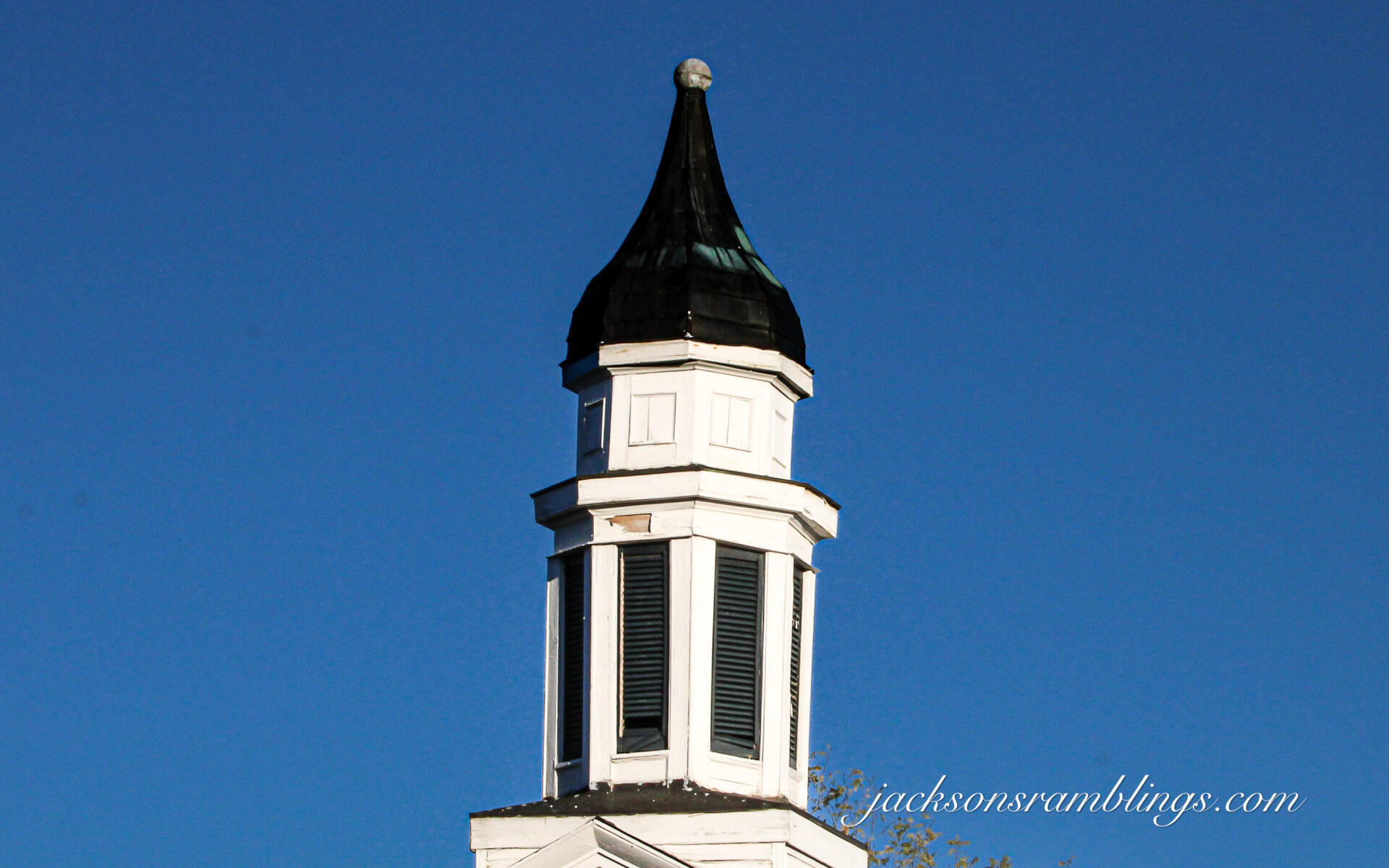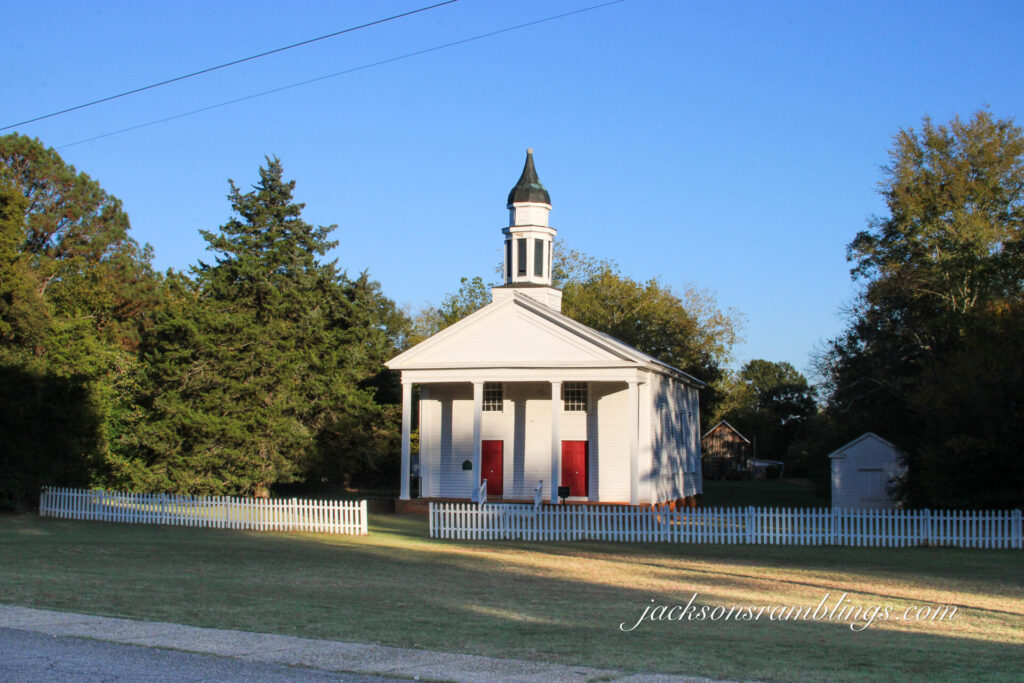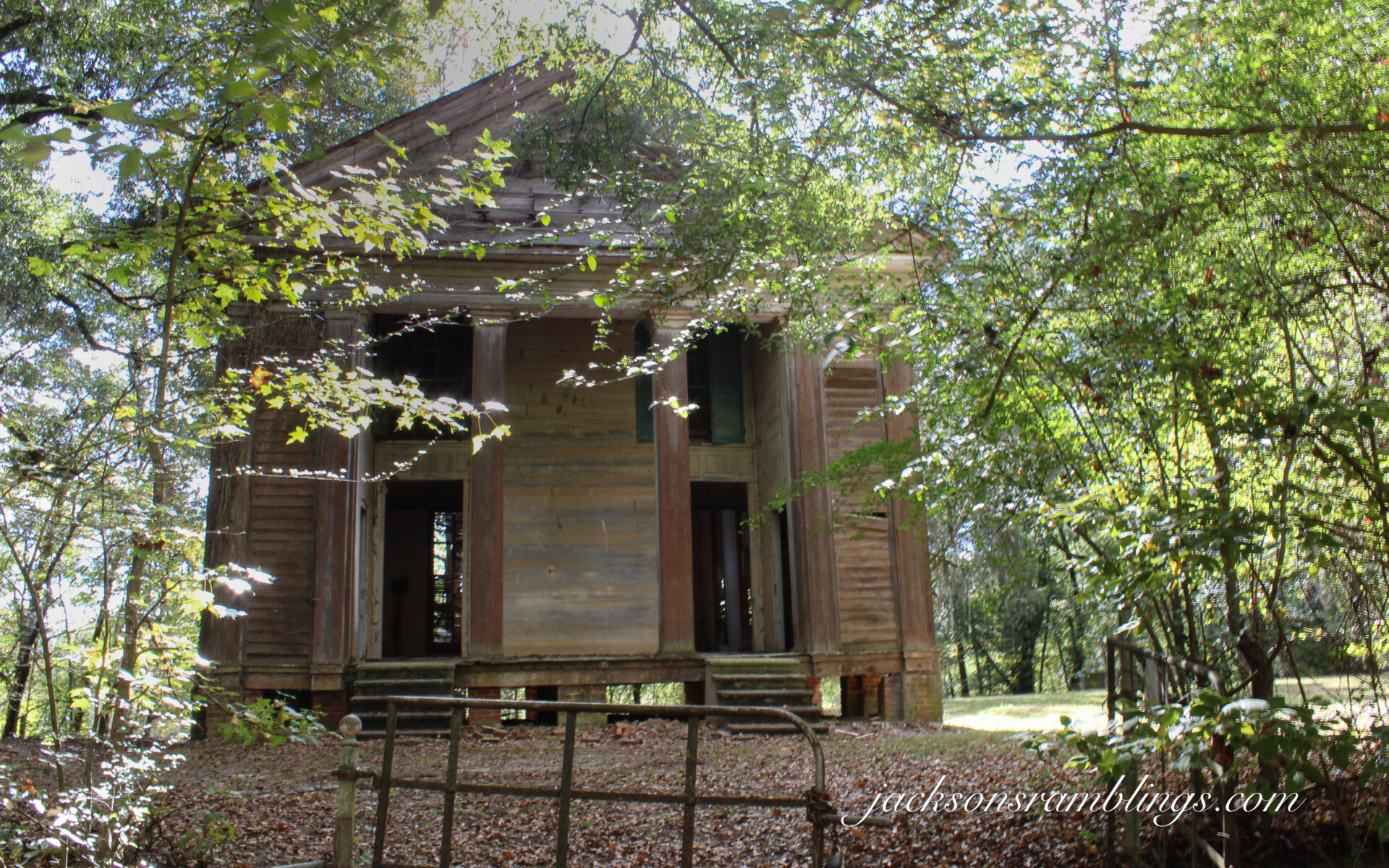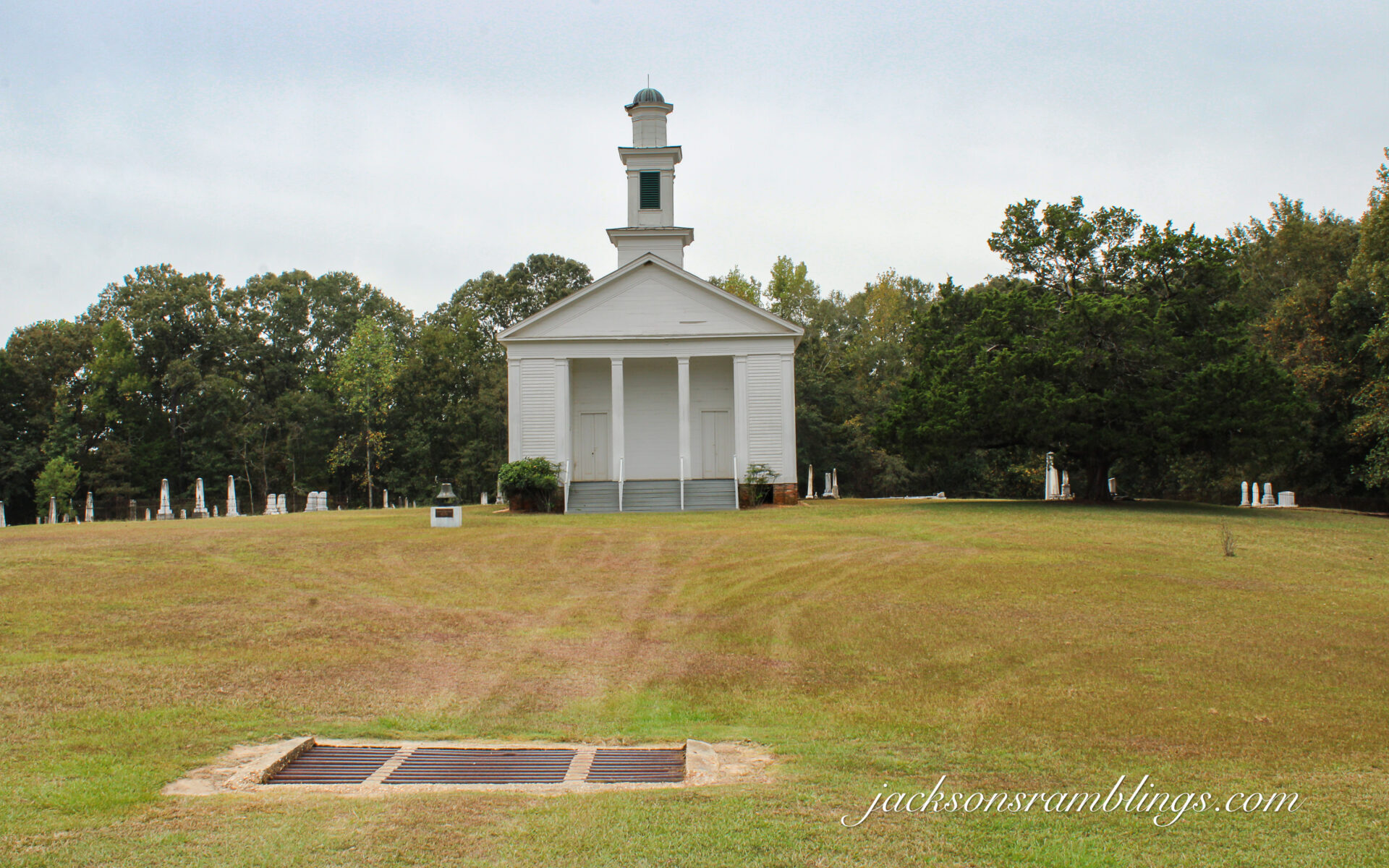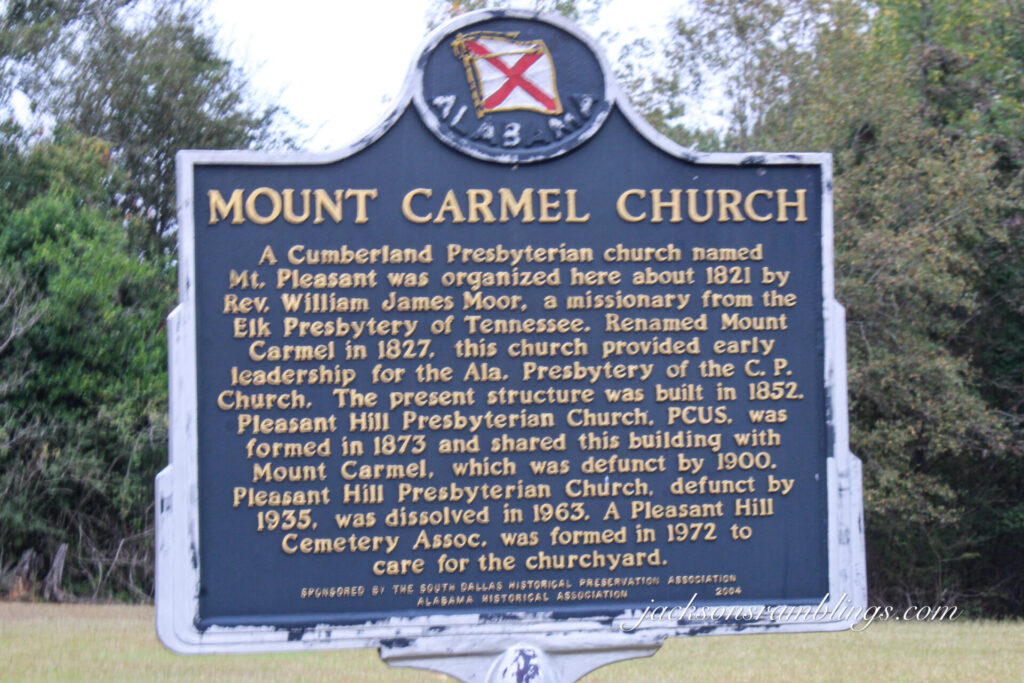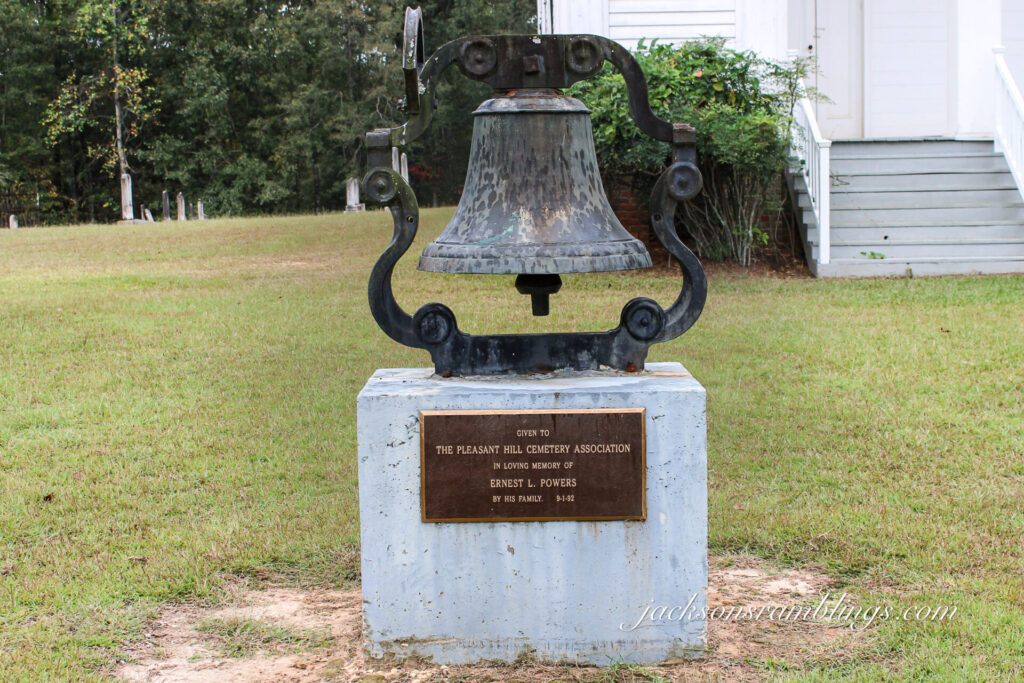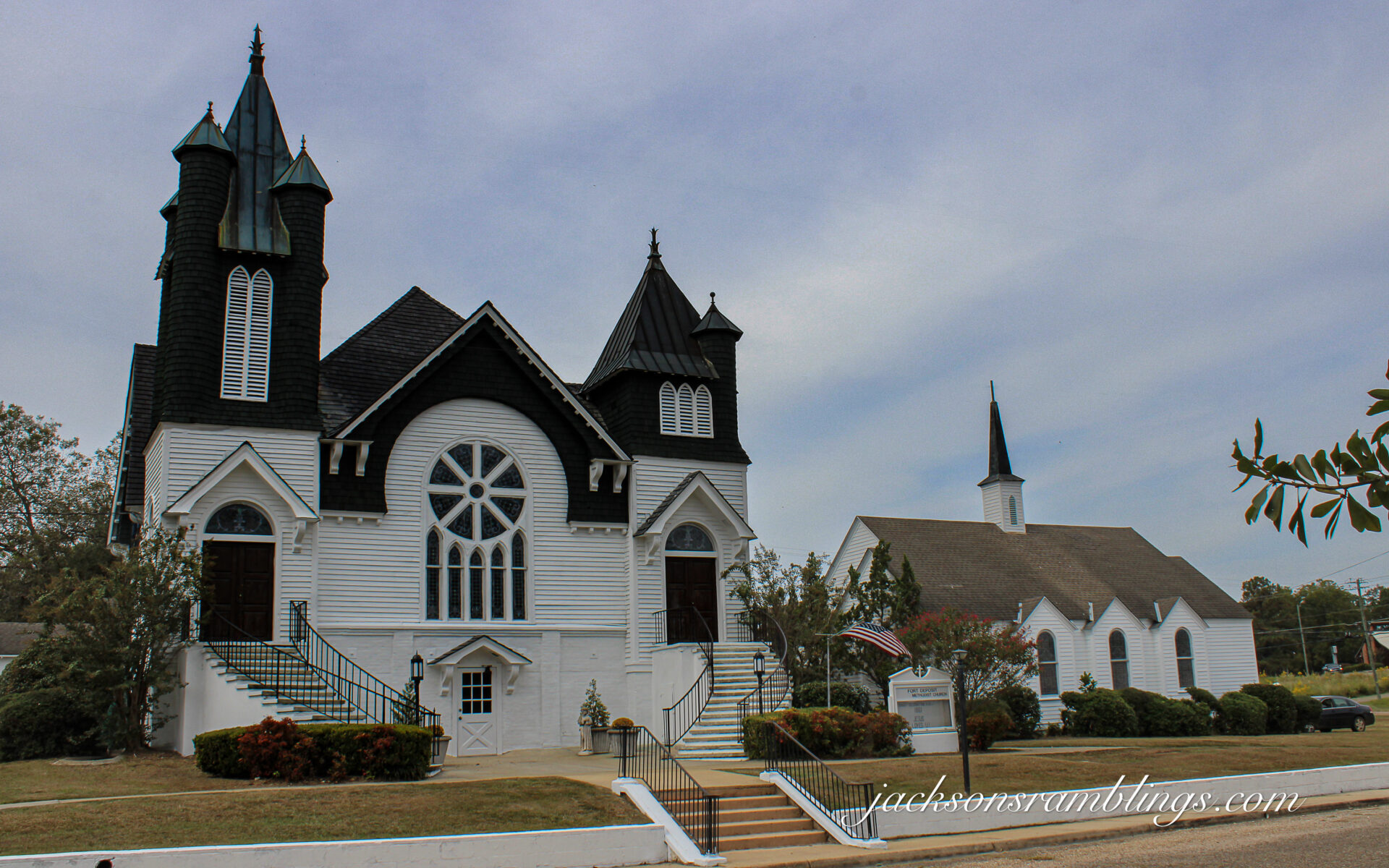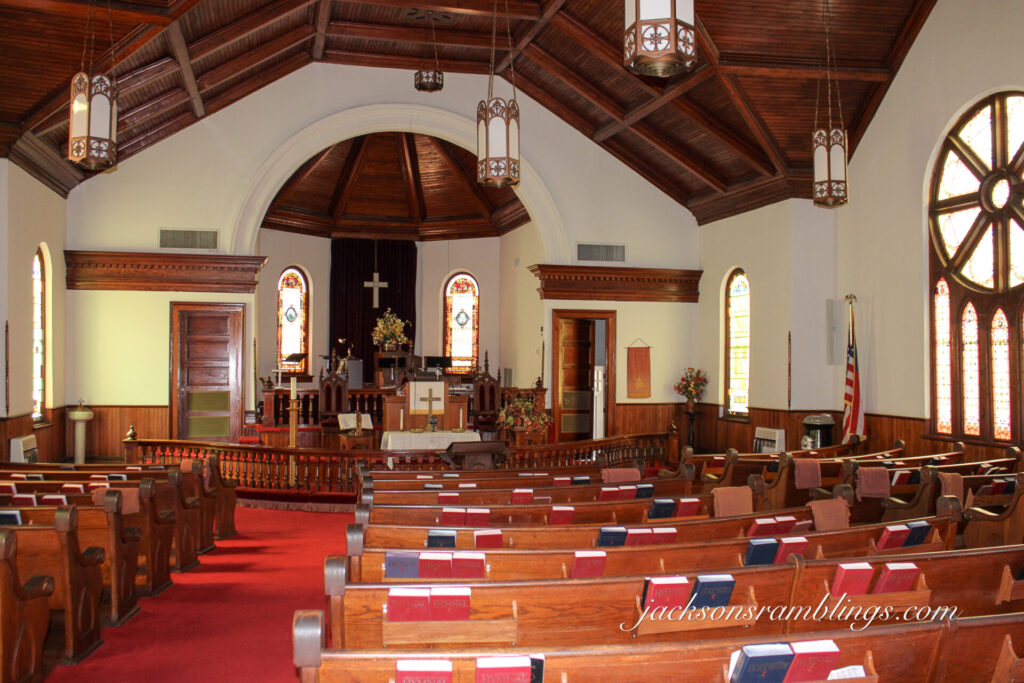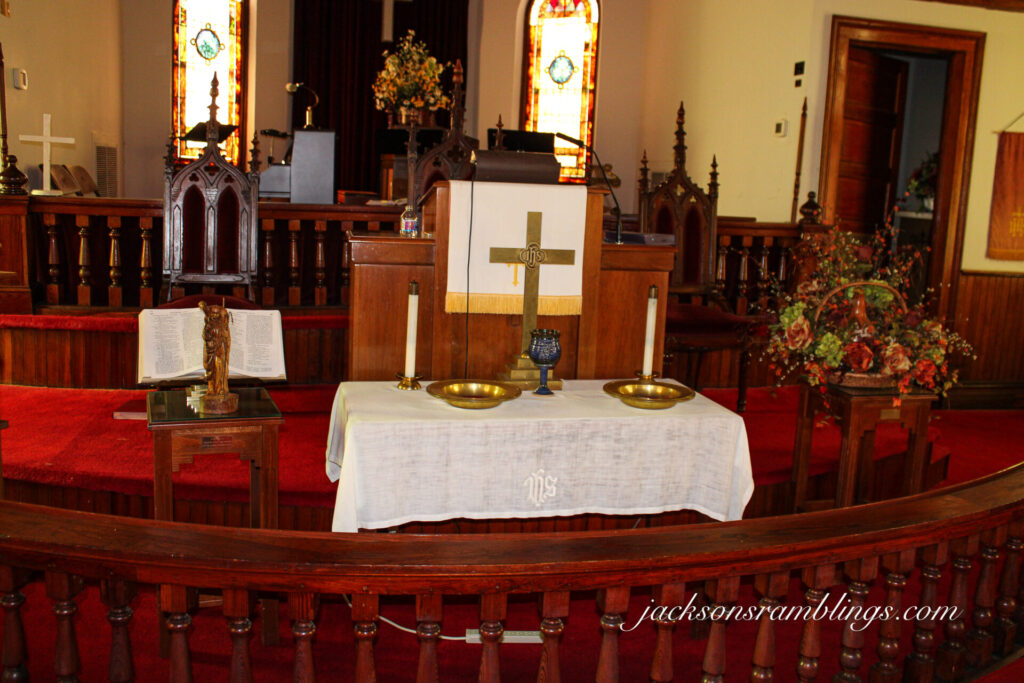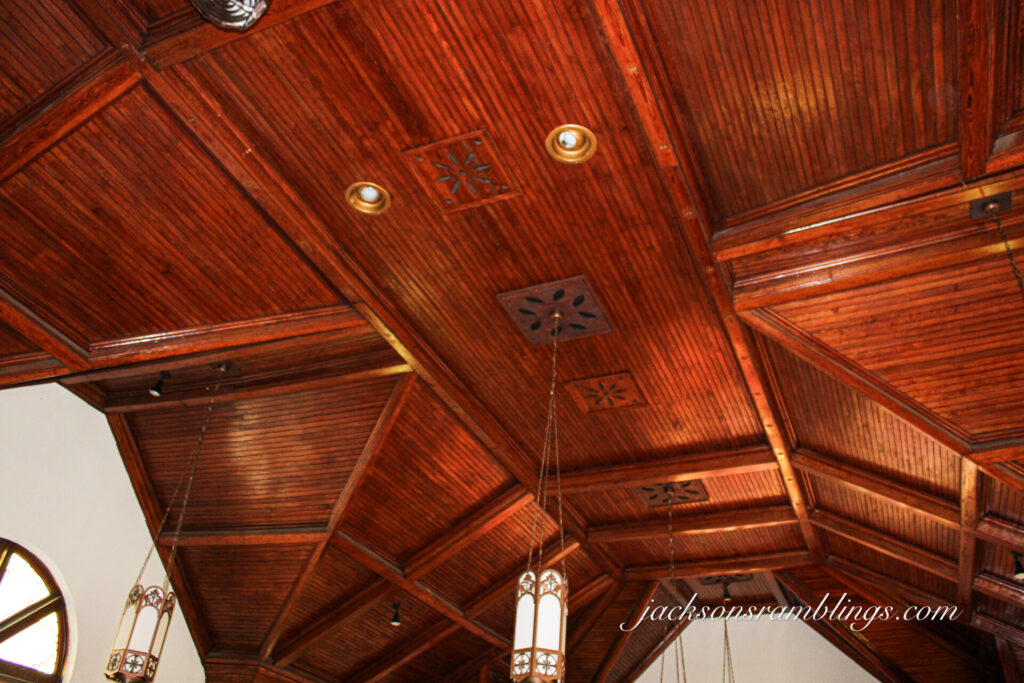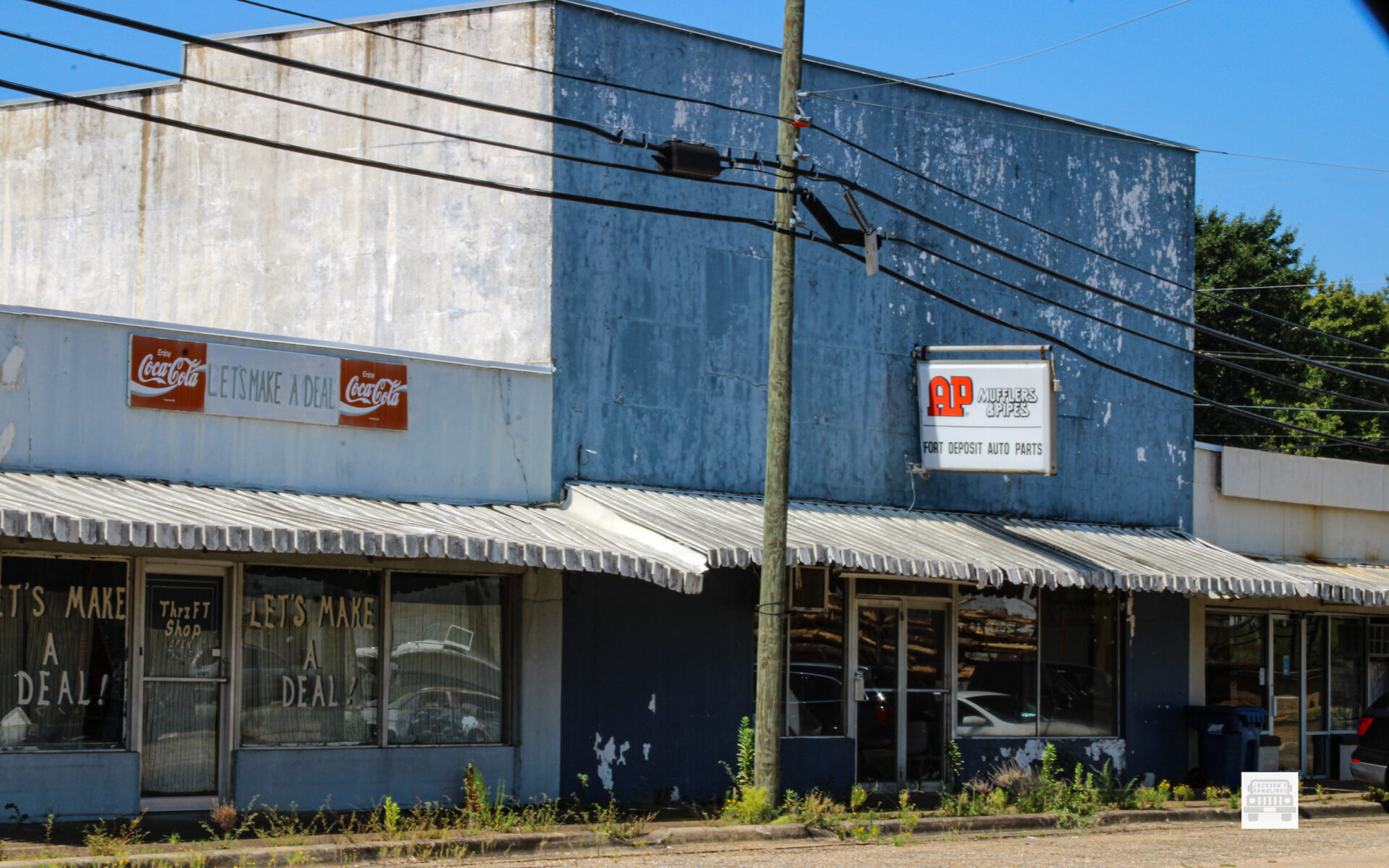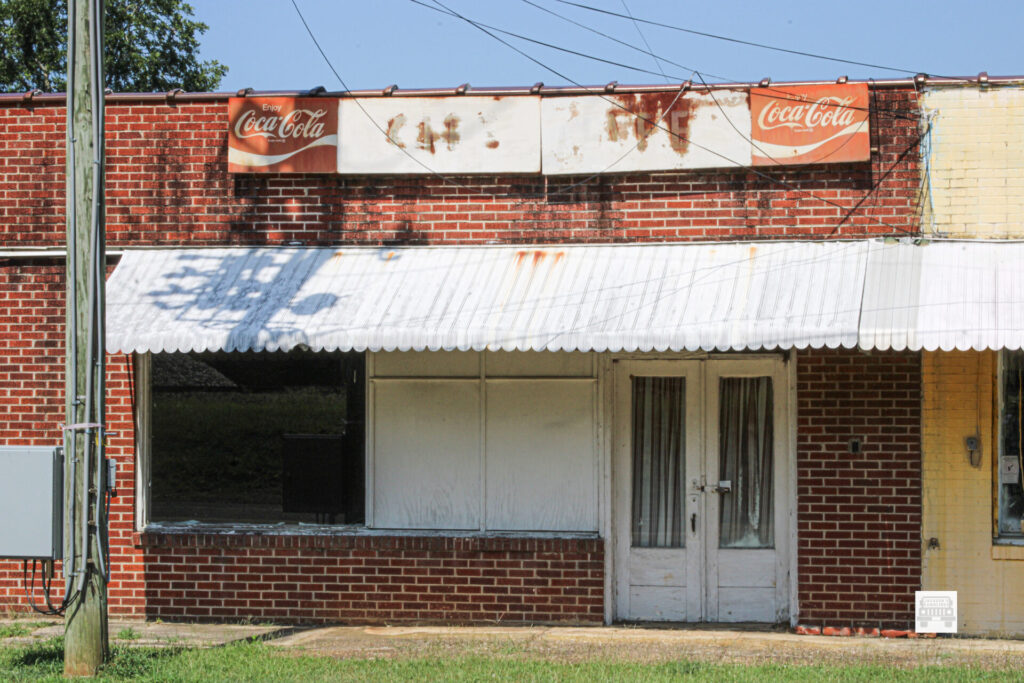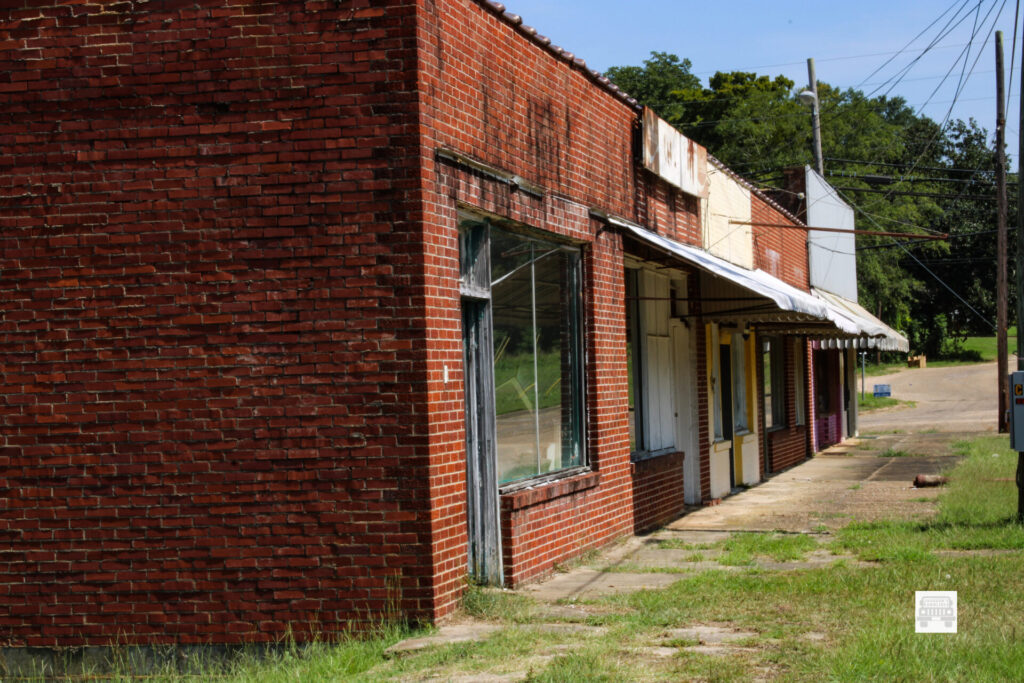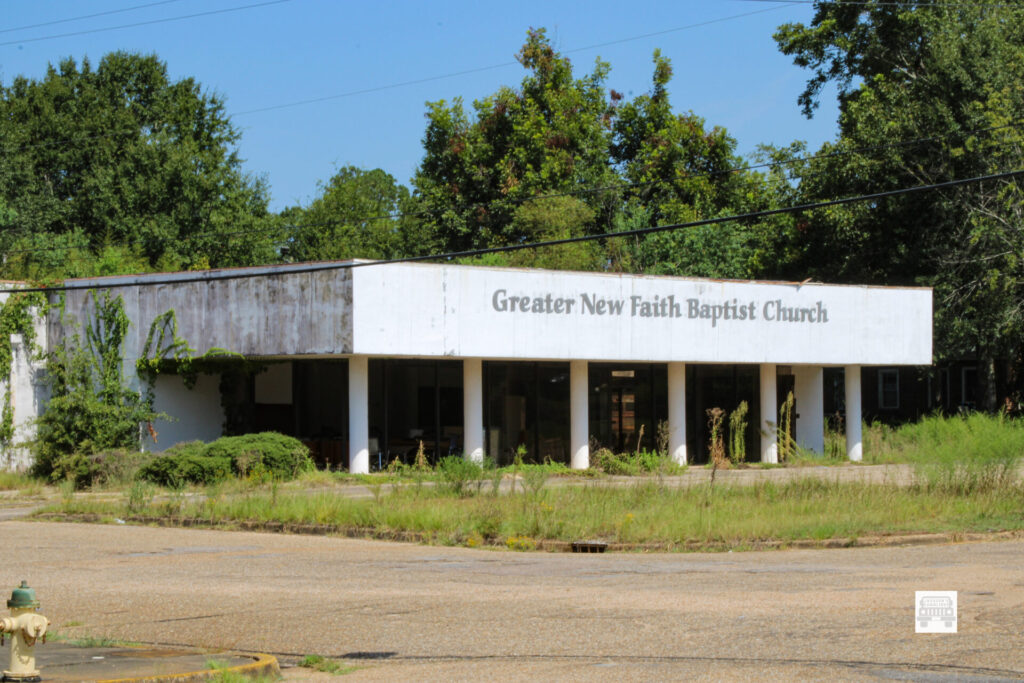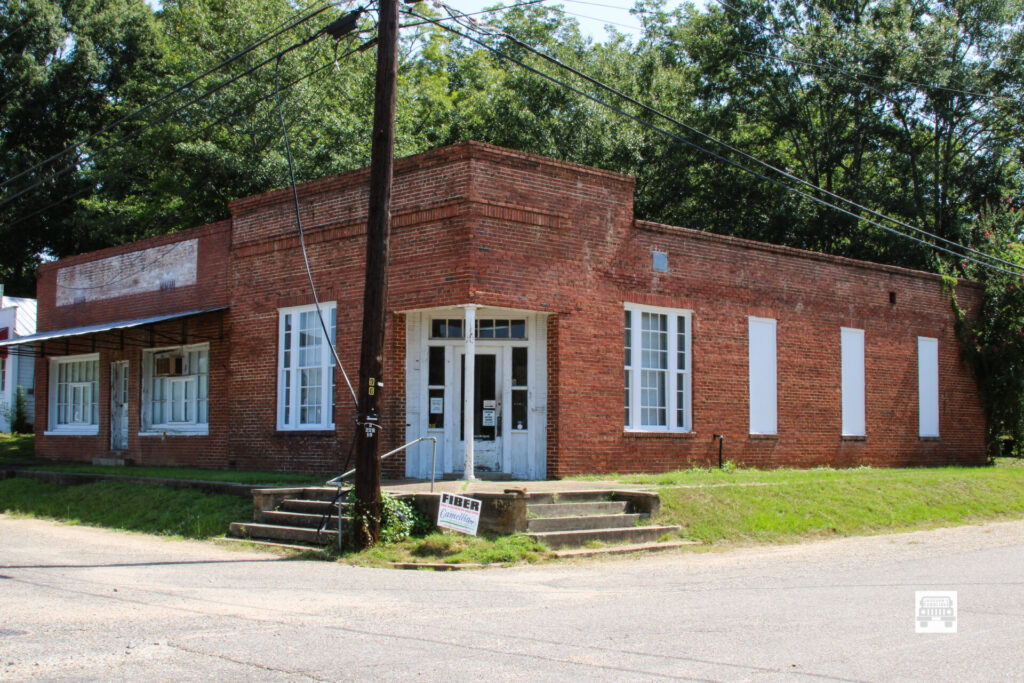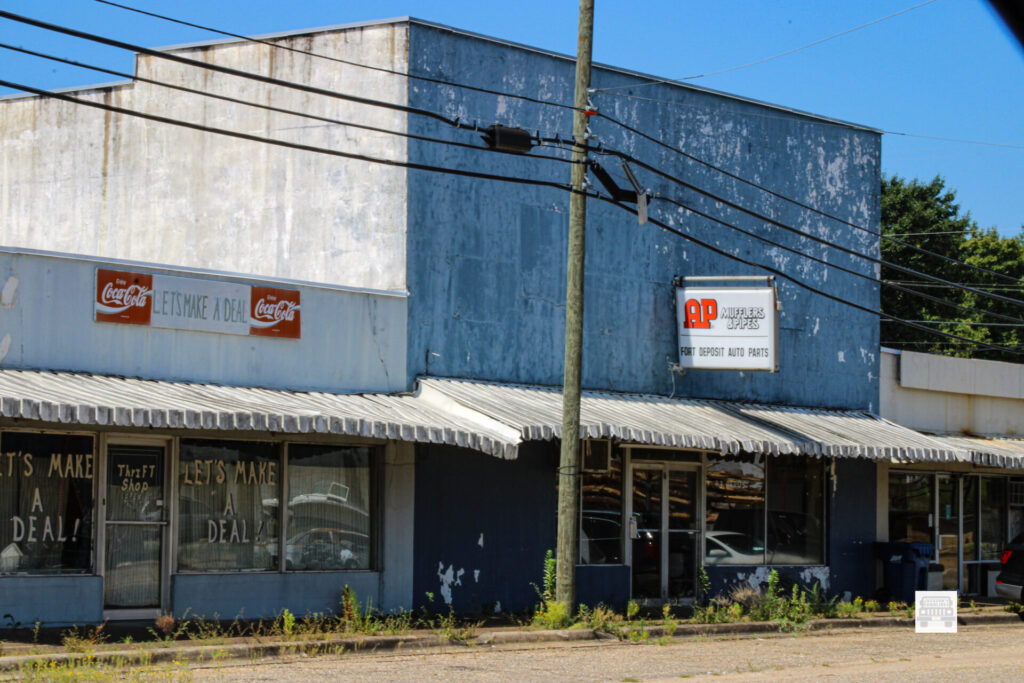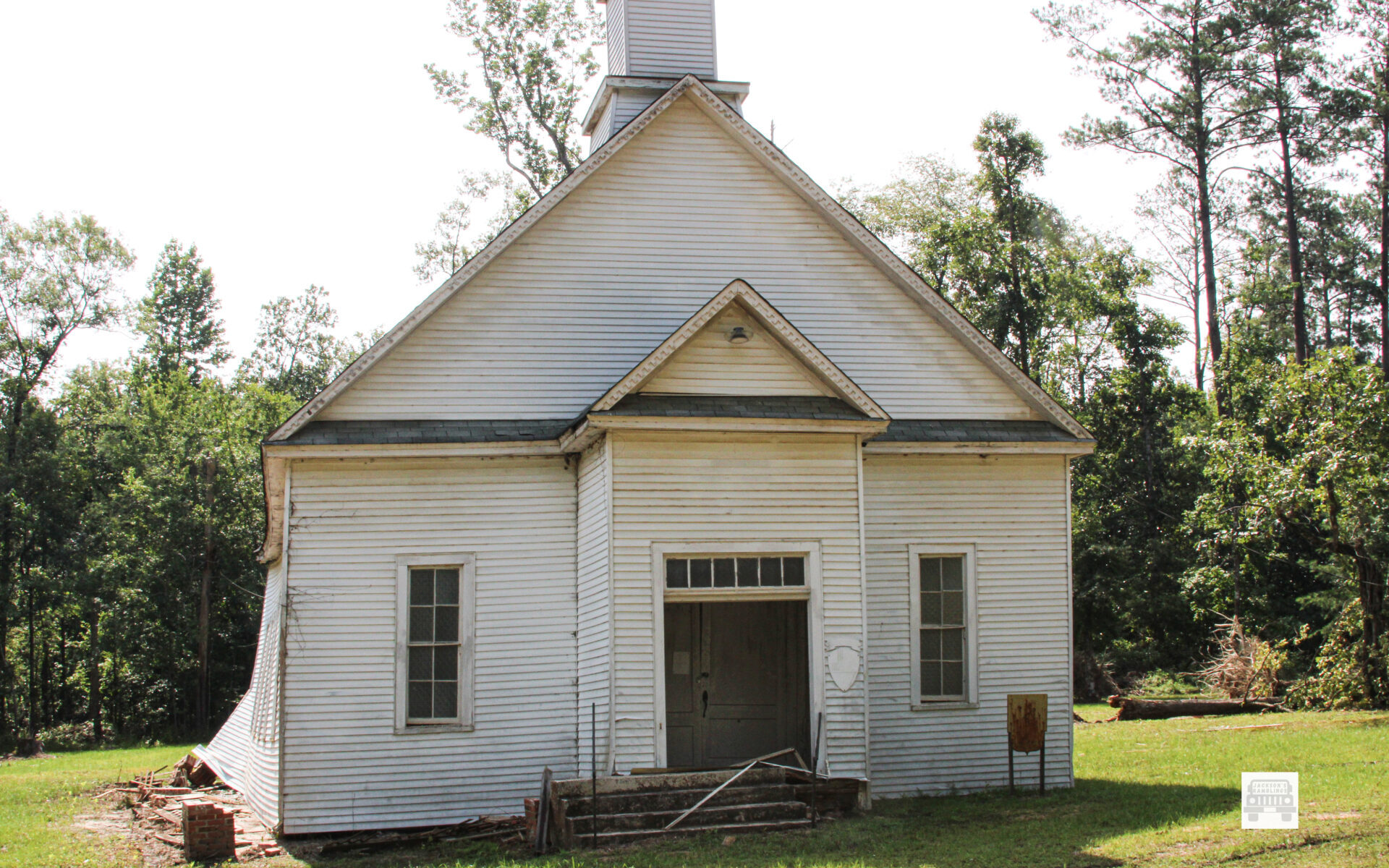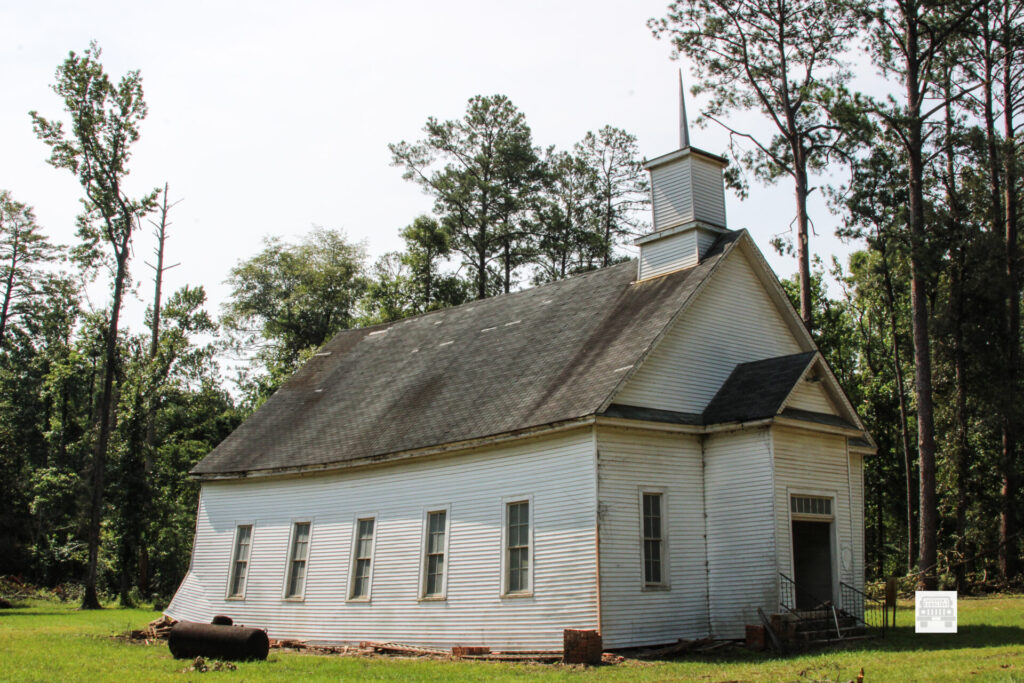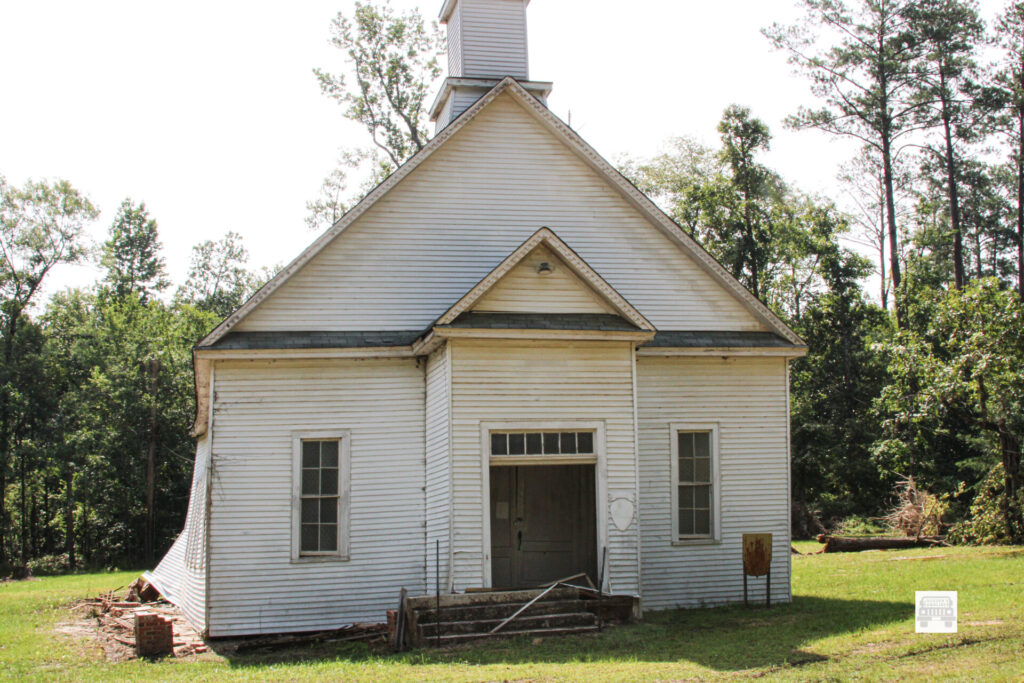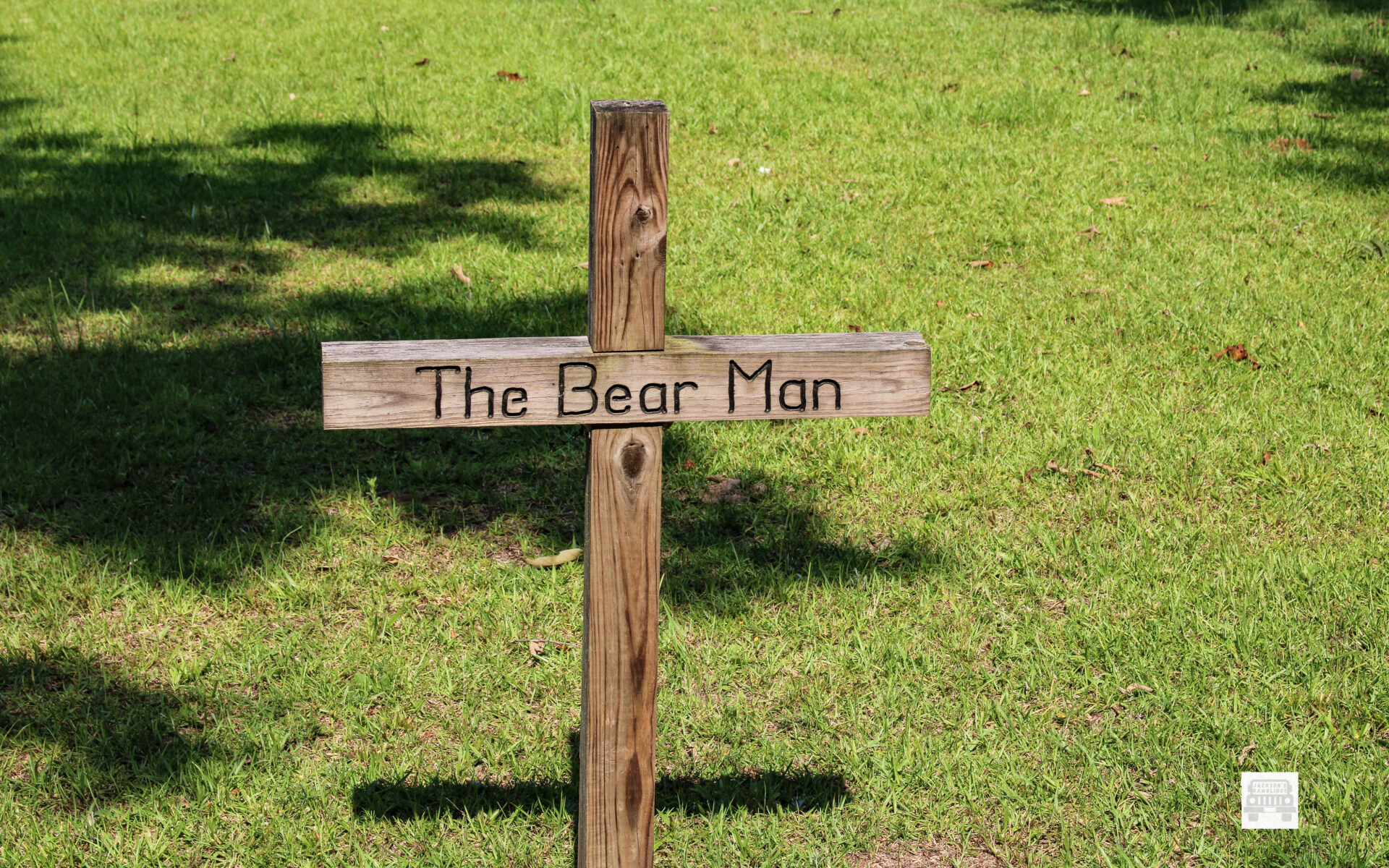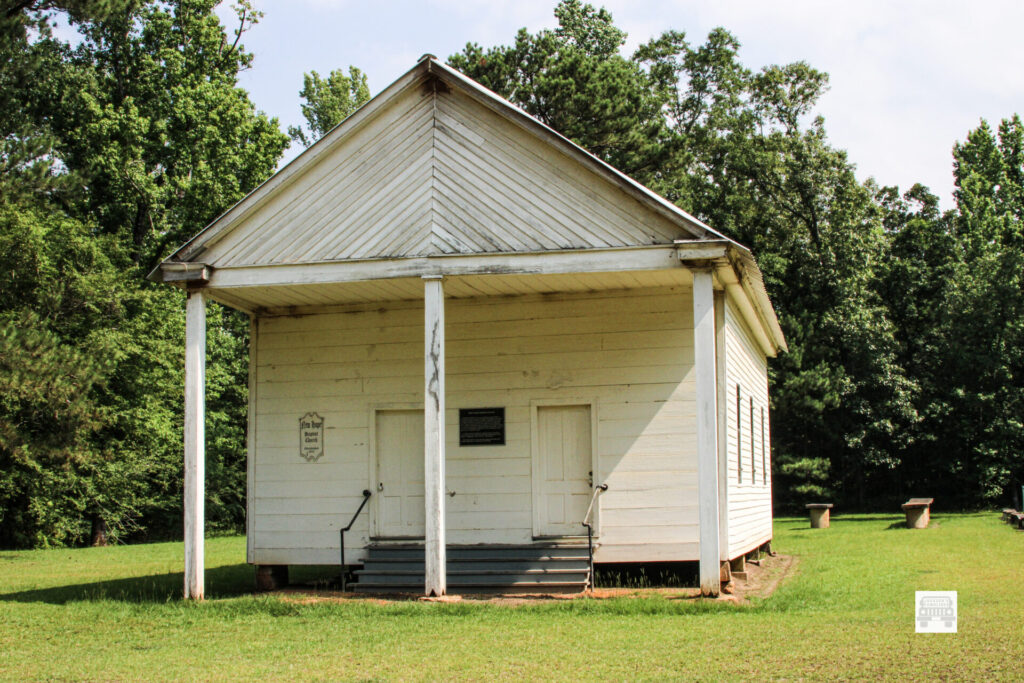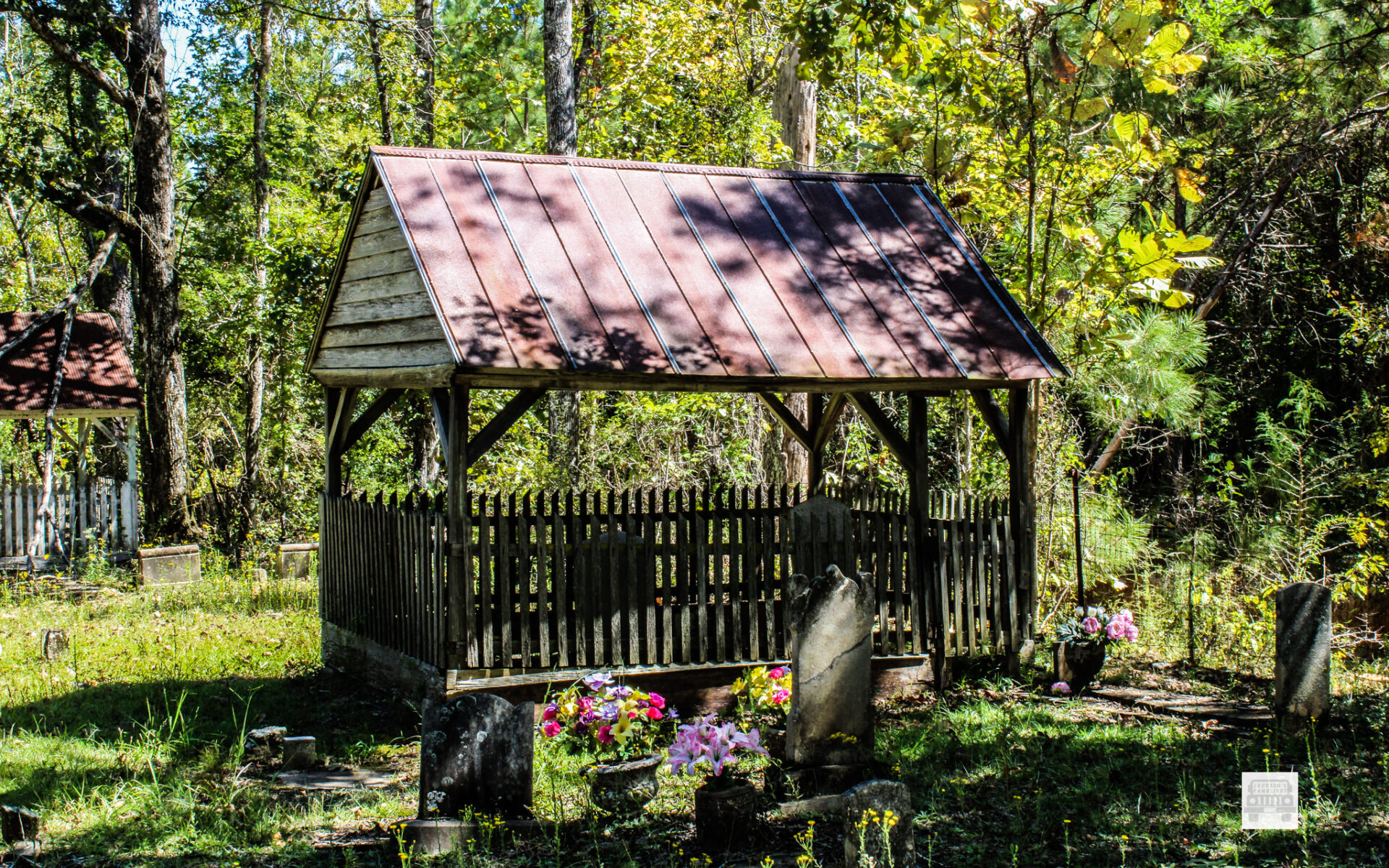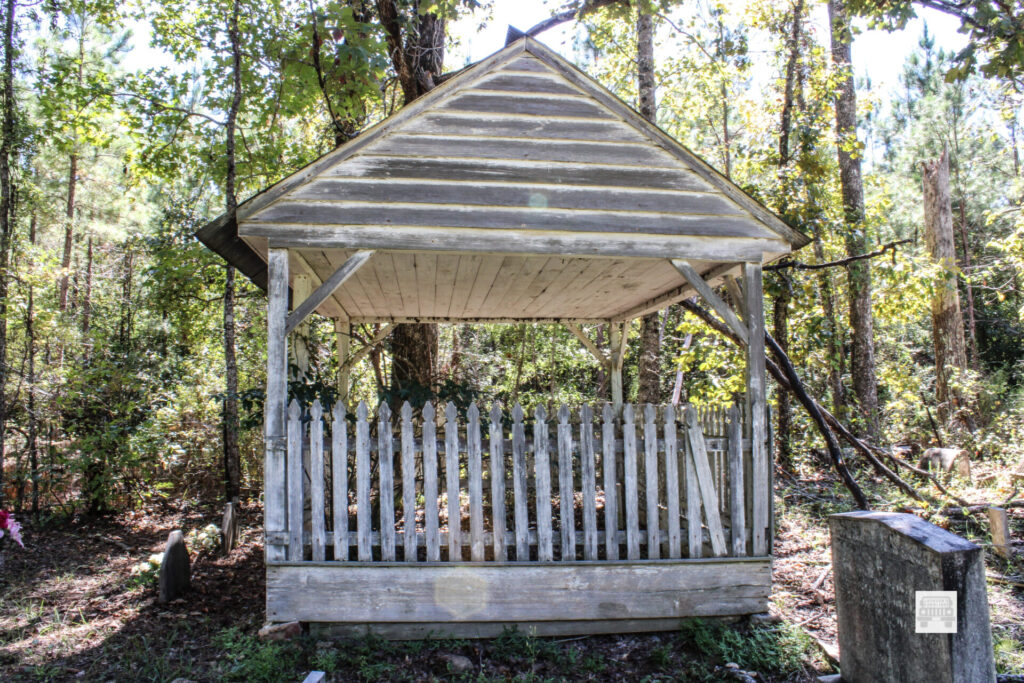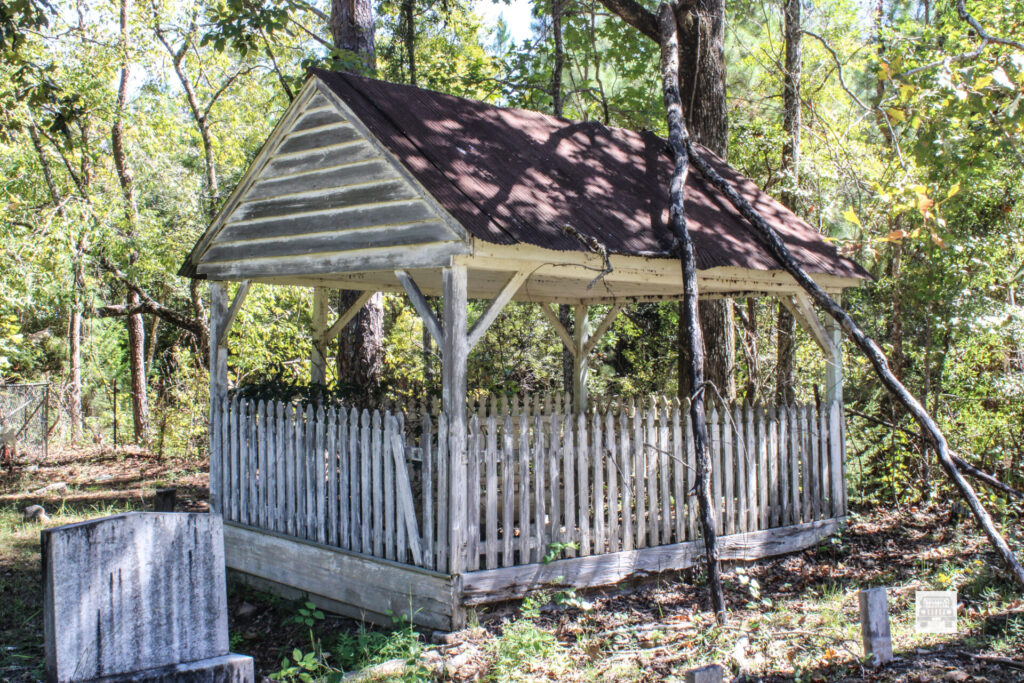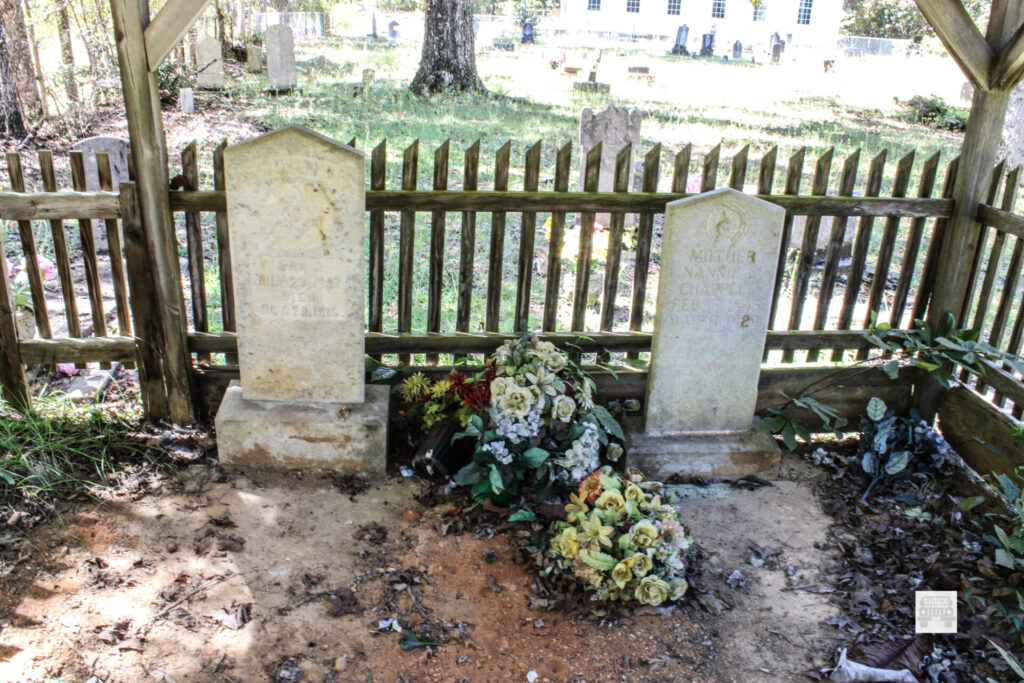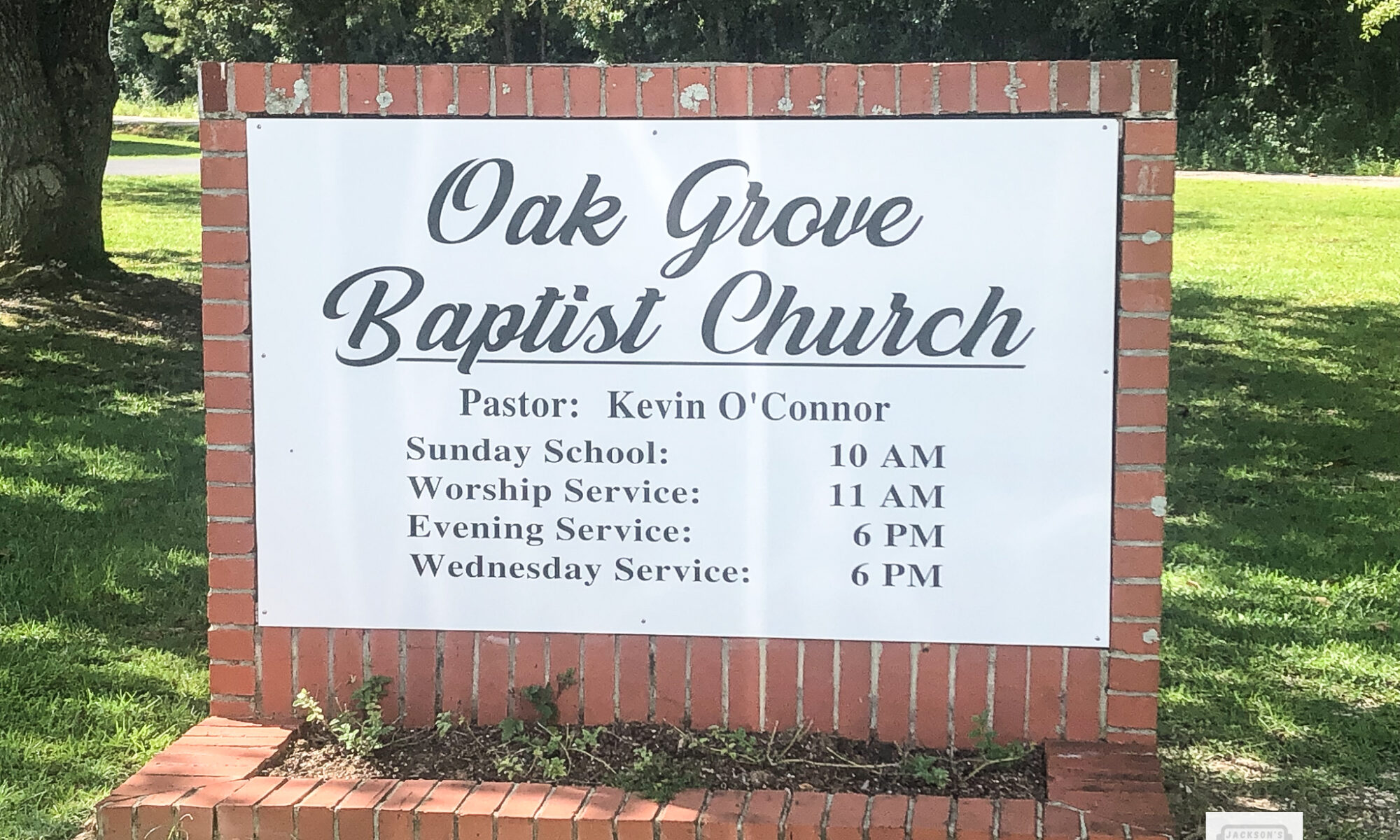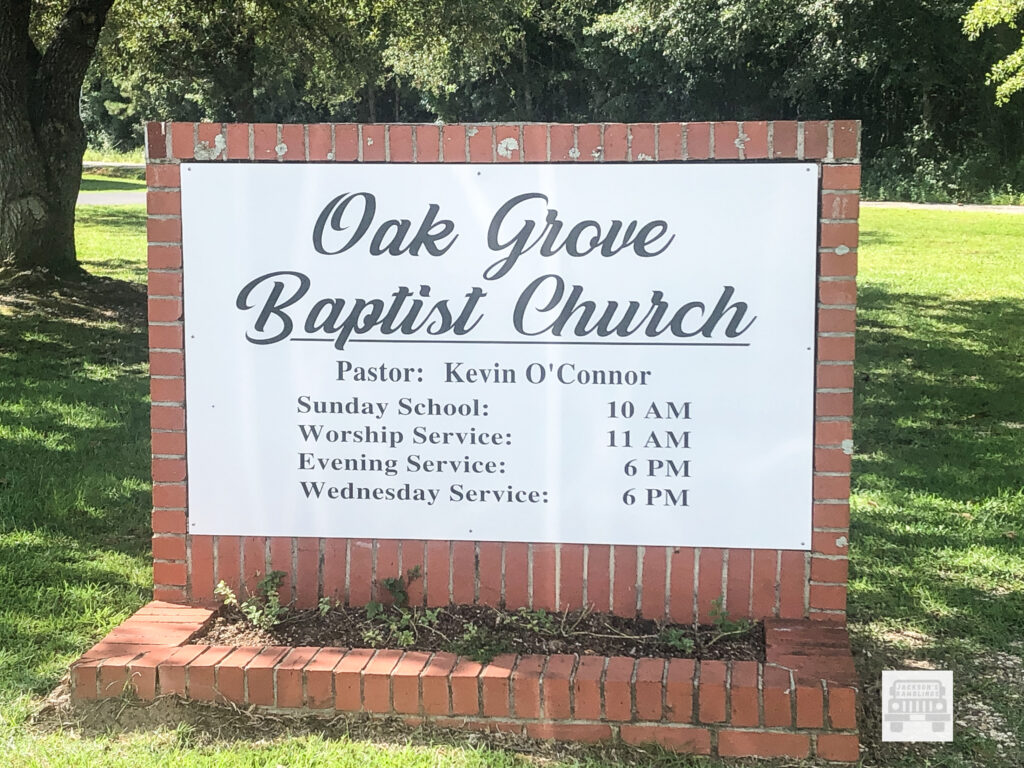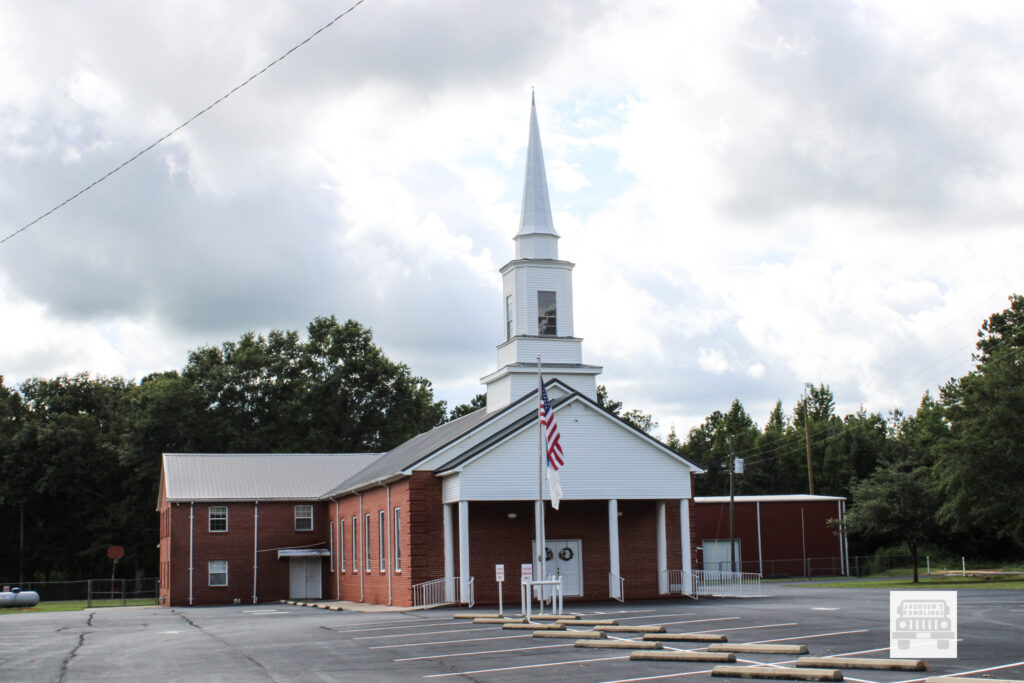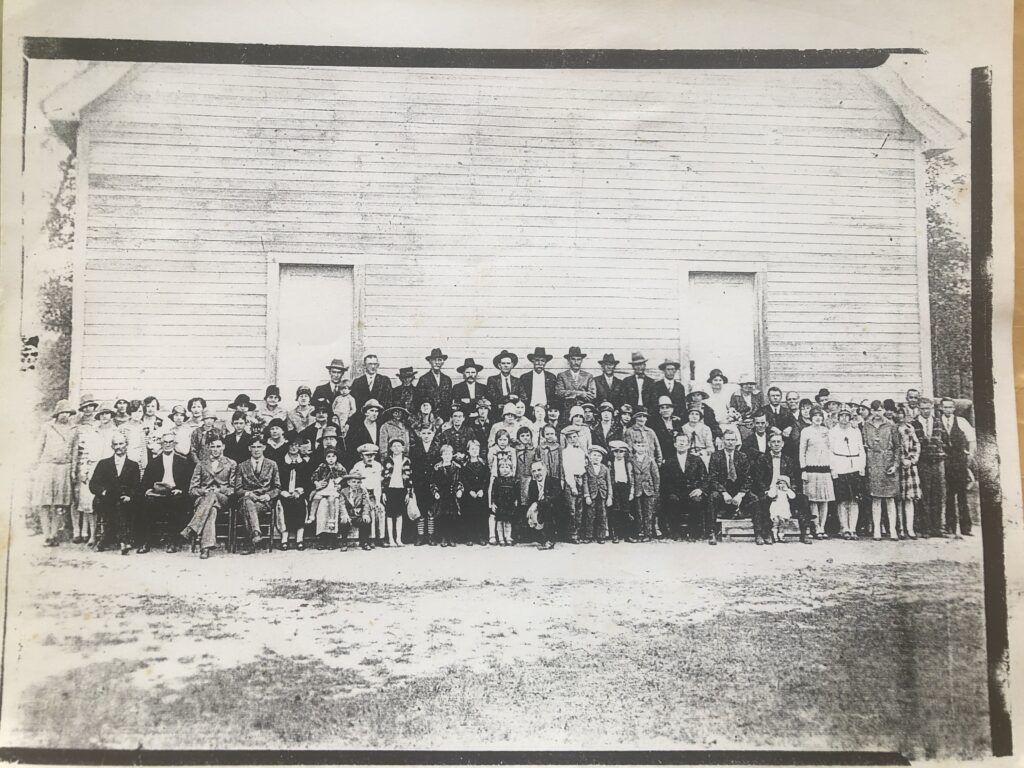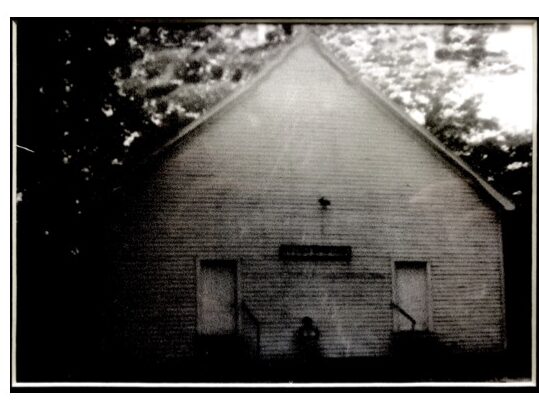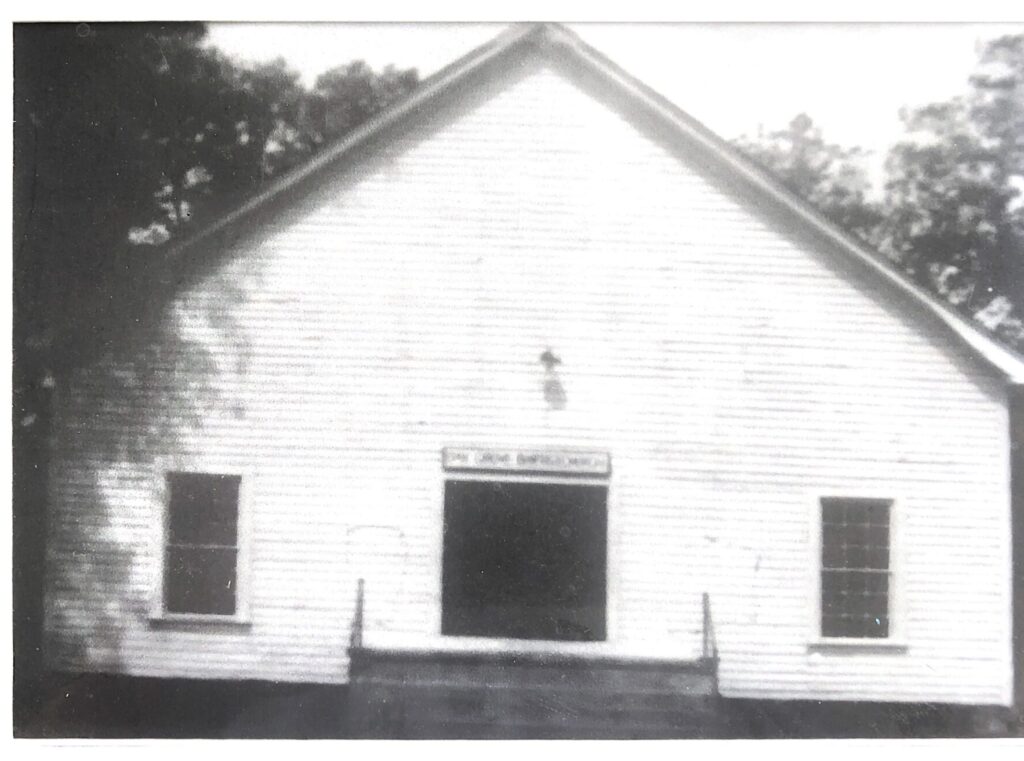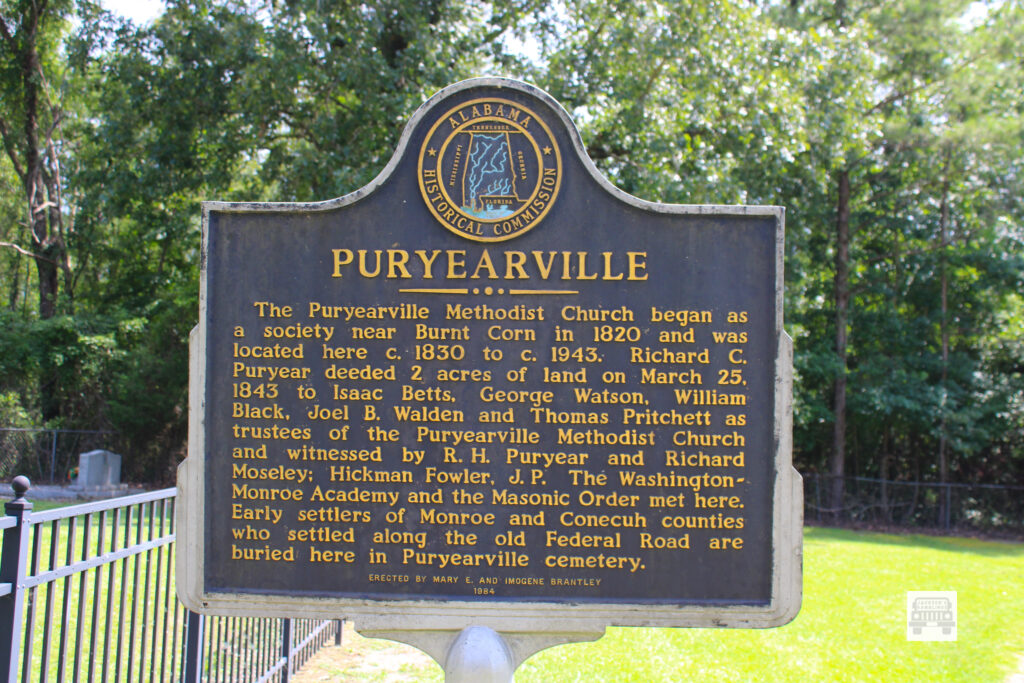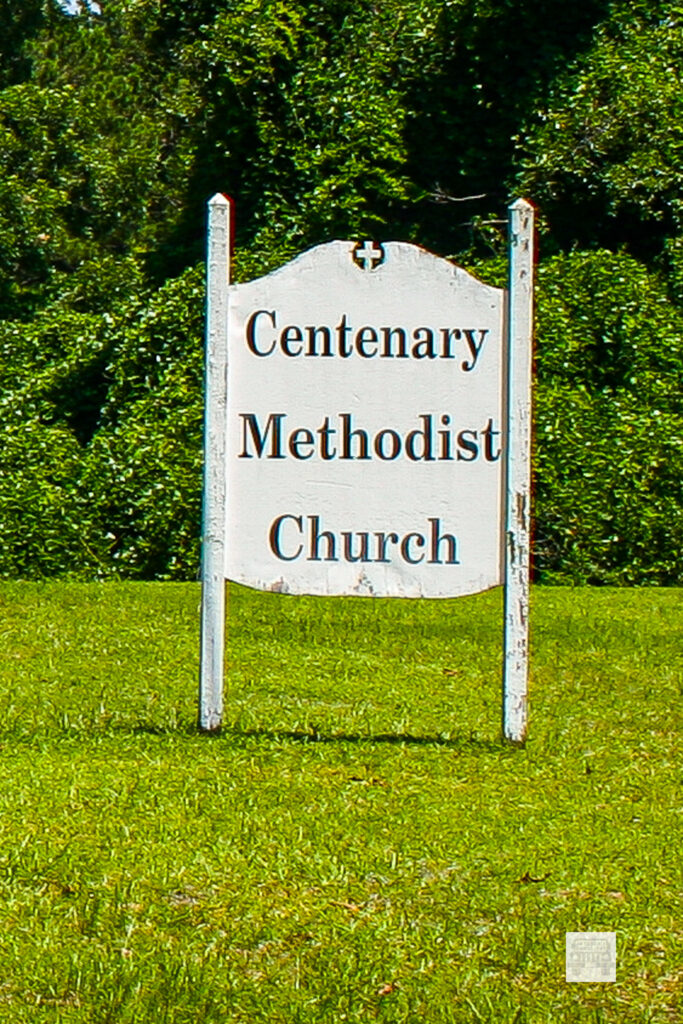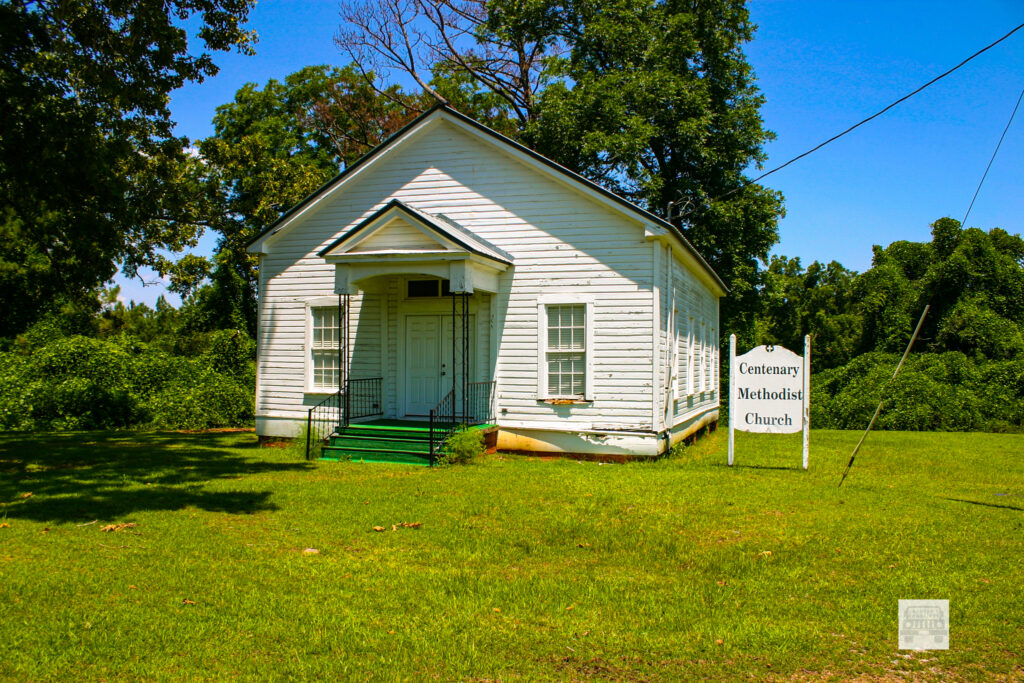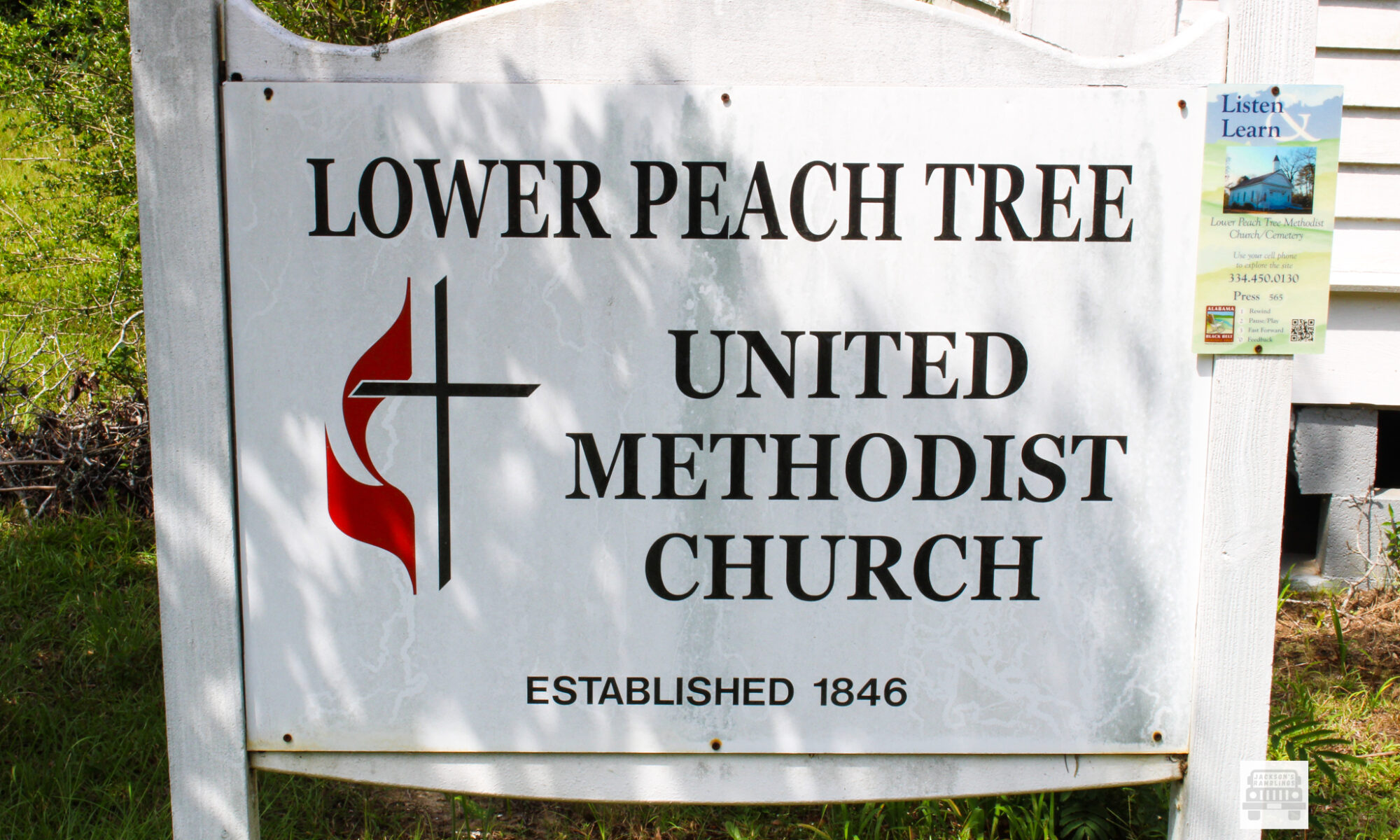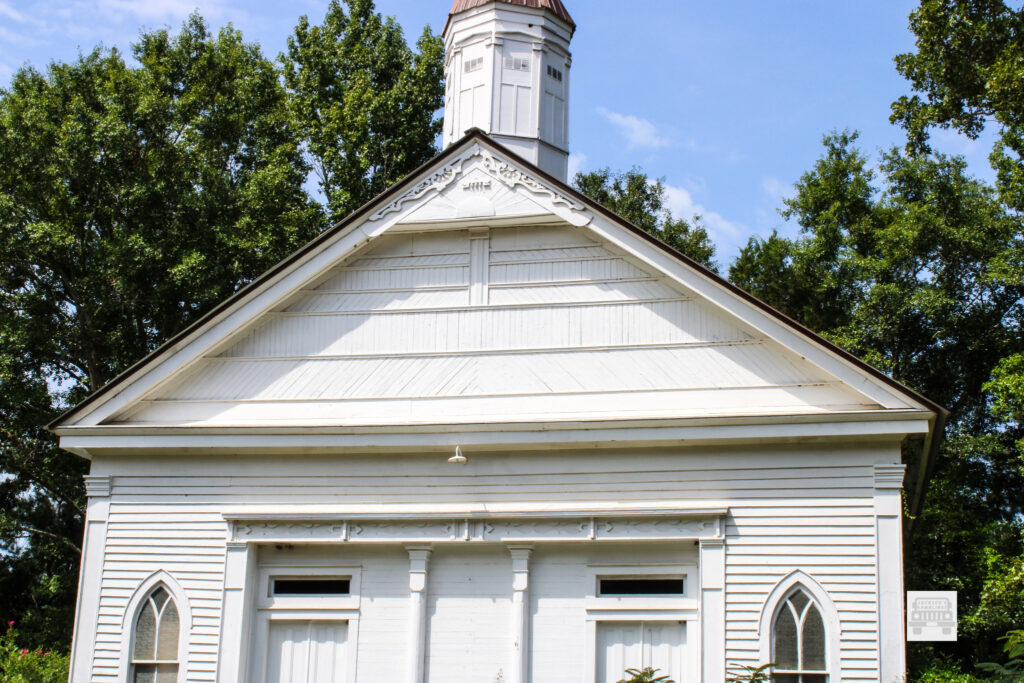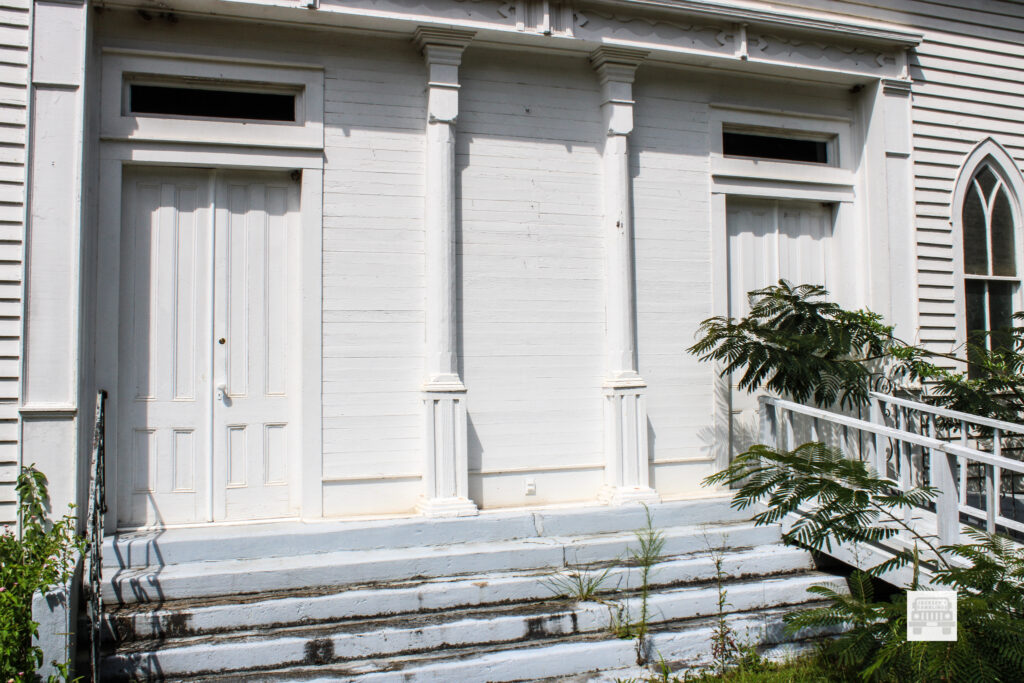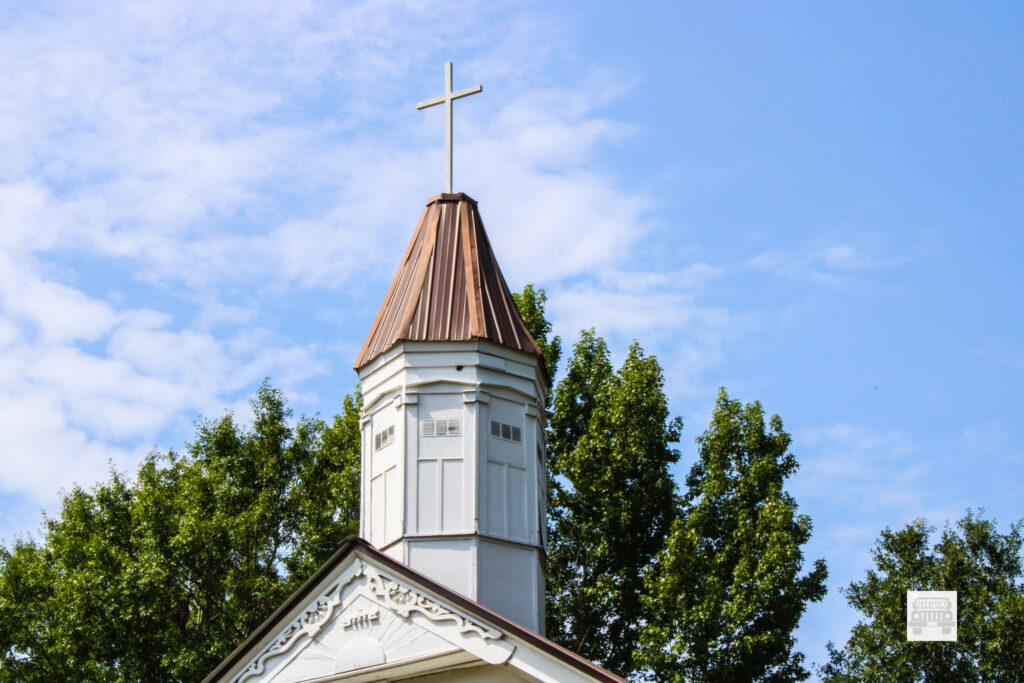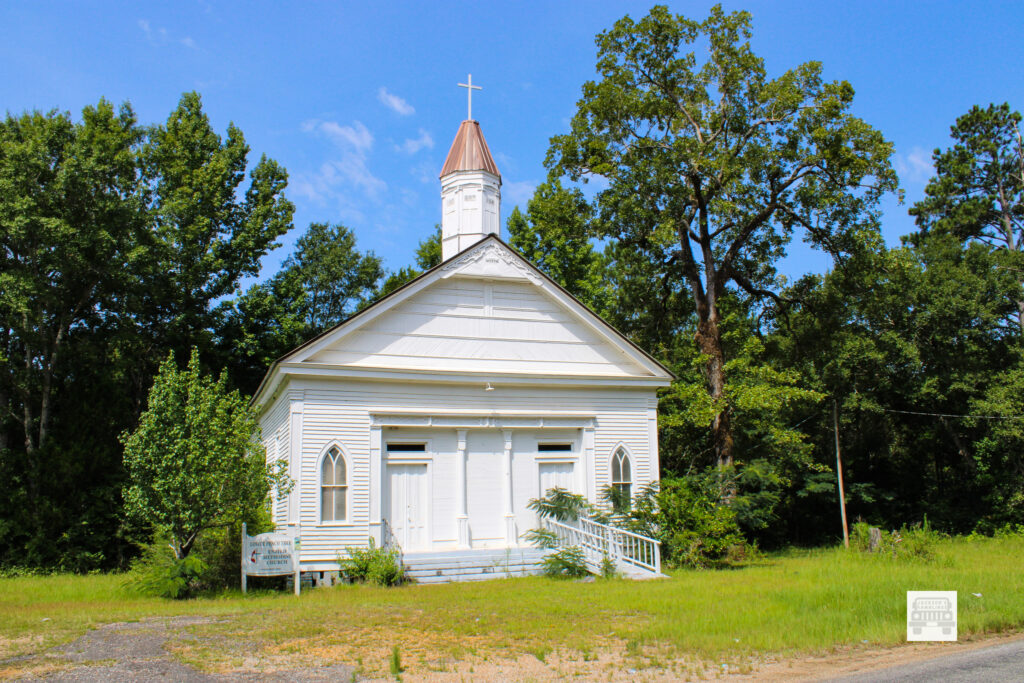I say it every time I go on another adventure or write another blog, but I want to say it again. I love doing what I am doing. There is always another interesting time, place, person, or thing, right around the corner. More times than not they are hidden in plain sight as well.
For years I have seen pictures of the Pilgrim Rest Church in the Red Hills. As all of those that follow me know I was fortunate enough to finally run somebody down that knew something about that one. When I was getting information on it another old church came up. It also sits in the Red Hills of northern Monroe County. This one unlike the old Pilgrim Rest is not as well-known nor as often photographed. One reason is it is not on the main drag road. The other is that it is on private land with no trespassing signs out a distance away from it.
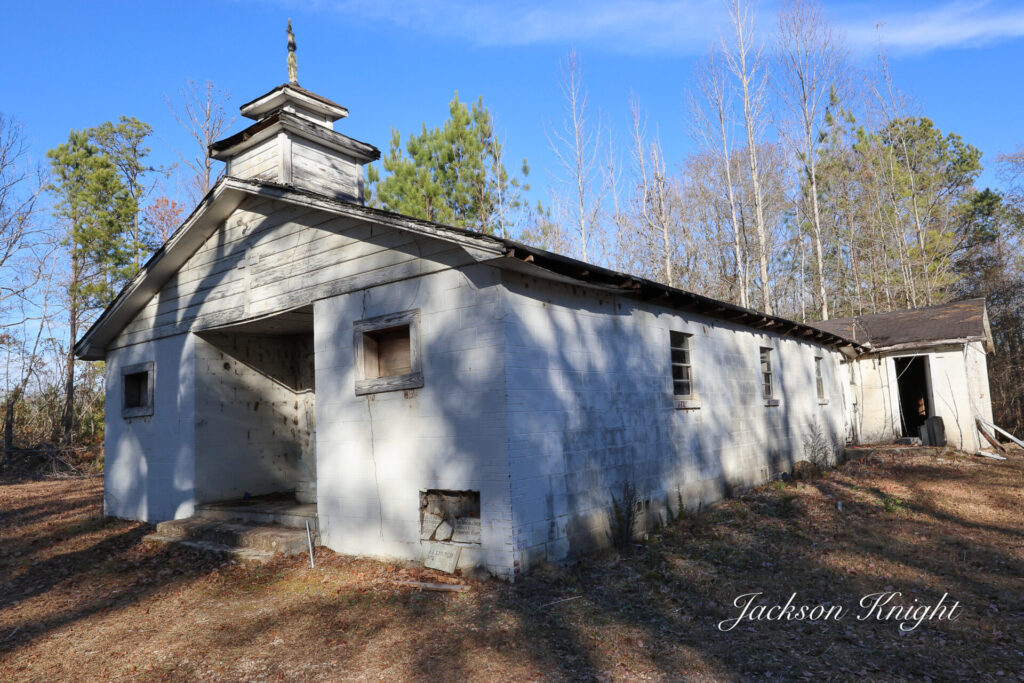
I knew of its existence before talking to my friend about the Old Pilgrim Rest. However, I did not know anything about it. Because I was working on so many different things I kind of put it on a back burner in my mind so to speak. It was one of those places that I would think about from time to time but did not work on finding anything on.
I recently started working on a picture book of the churches of Monroe County. As I was working on that project, I realized I needed to share that one in the book. With that in mind I started searching.
As I started asking questions to my sources that know the people in that area I hit on a name. Then I got a phone number for a guy. Because I had so much going on I held on to the number for a couple of weeks before I called. When I called, I got a guy named Ronnie Nettles. He was a nice guy that I immediately knew I needed to visit and get more info from.
We agreed on a time to meet up at the old church and so on a beautiful Sunday Afternoon, we left home heading that way.
New Liberty A.M.E Church sits in the Red Hills on Olivia Road. Olivia Road is off John Shannon Road. It is a short distance south of where John Shannon Road and River Ridge Road cross each other. John Shannon Road runs from Old Scotland Road all the way to County Road 56 between Vredenburgh and Buena Vista. Olivia dead ends in private property at the old church.
My wife and I drove to the old church and parked. In just a short time a pickup rode up with two guys in it. They introduced themselves and we shook hands. One of them was Ronnie the guy I had been talking with on the phone. He sent the other one back down the road to where they had been sitting to get his older brother. He drove up shortly. His name was Clevester.
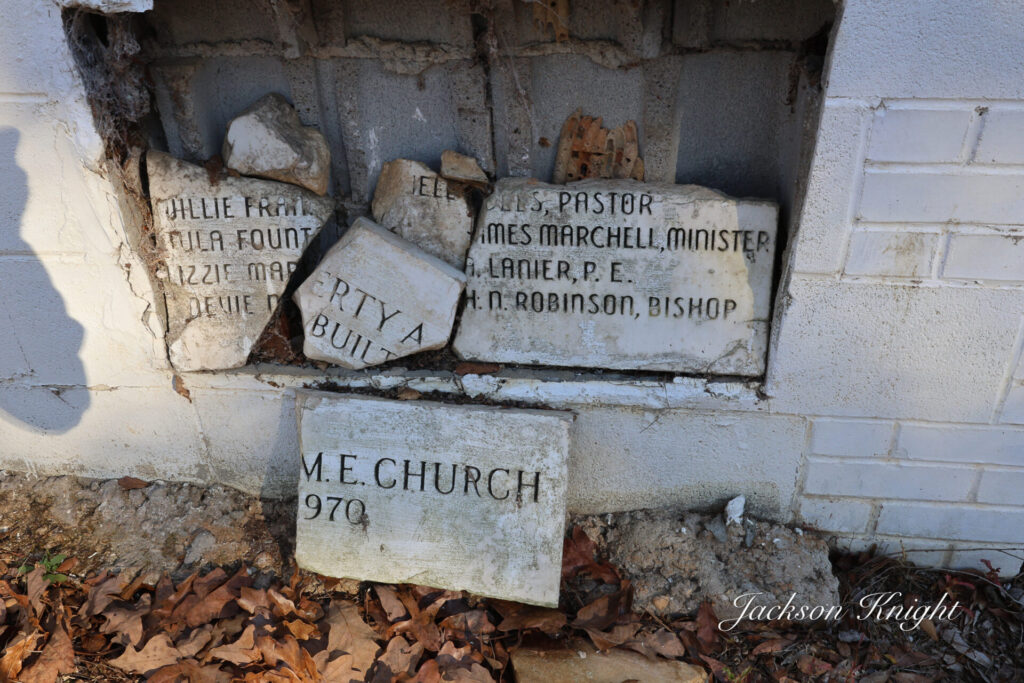
We walked around the old church and talked. It was interesting to learn. First off, I learned that the building was the second building. The first building had been sitting on the south side of the present building. It was built in the mid to late 1800’s but neither Ronnie nor Clevester knew the years.
Secondly, I learned that not only was the first building a church, but it had also been a school. It was amazing how many people used to be out in those hills where nobody is now. Now there is nothing out there but woods and miles of red dirt roads. This church was only a mile or so as the crow flies from the Old Pilgrim Rest Church. There was two if not more churches in that community.
I learned that these guys’ great grandfather Jeremiah Fountain had been the founder of the church.
As we continued to talk, we walked over to where the old cornerstone for the present building was. Unfortunately, it had been damaged in an accident. From it we were able to see that this building had been built in 1970.
As we continued to talk, I learned that they closed the doors on this one and moved to Tunnel Springs and founded another church. That one also is named New Liberty. The one in Tunnel Springs was built in 1995 and the one in the Red Hills was closed at that time. The reason for closing this one and moving to Tunnel Springs was the fact that it was in such a remote location and that the roads were in such bad shape for people to try to travel.

I had learned from the information I got on Pilgrim Rest Church that the two churches had often fellowshipped with one another until their closings. Pilgrim Rest had closed before New Liberty. These guys also told me that same thing.
One other interesting thing I learned was that while in the present location that there was always a weeklong revival the third week in September. This weeklong revival normally drew significant crowds and was looked forward to all year long.
Clevester, who was older than Ronnie also had an interesting contribution. He talked about the old original building. He said that it had two front doors and two rows of pews. He also said that it was heated with a wood heater and that it used kerosene lamps for lighting.
We briefly walked out into the cemetery and they both pointed out graves of their grandparents and other relatives who had now passed on but were significant to this old church. There were several graves that had slabs but nothing on them signifying who was buried there. I understood that there were others that were unmarked.
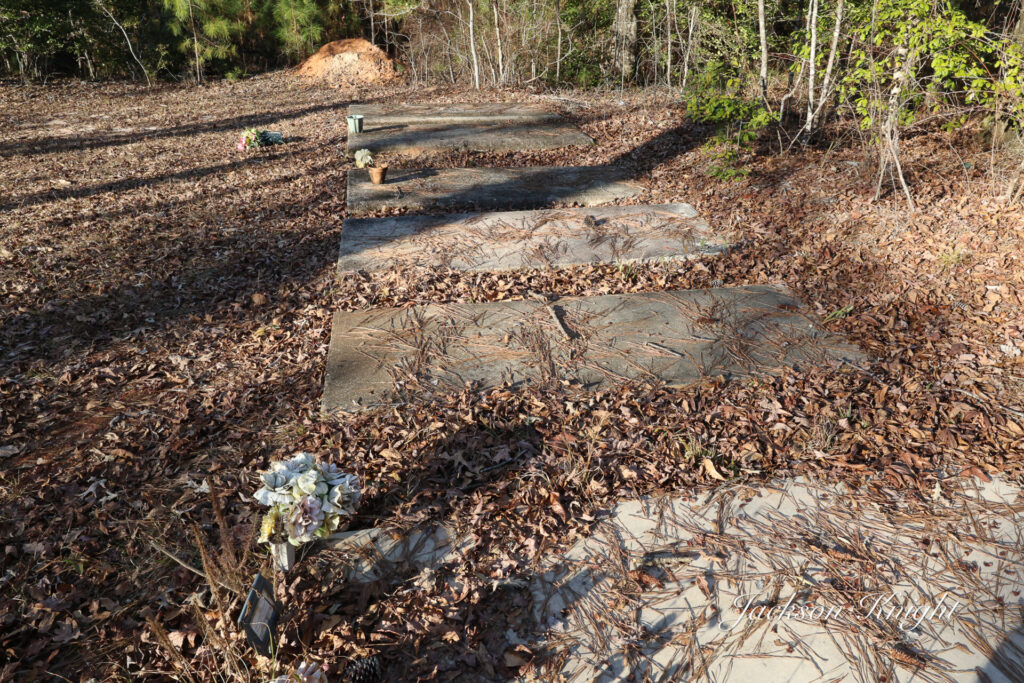
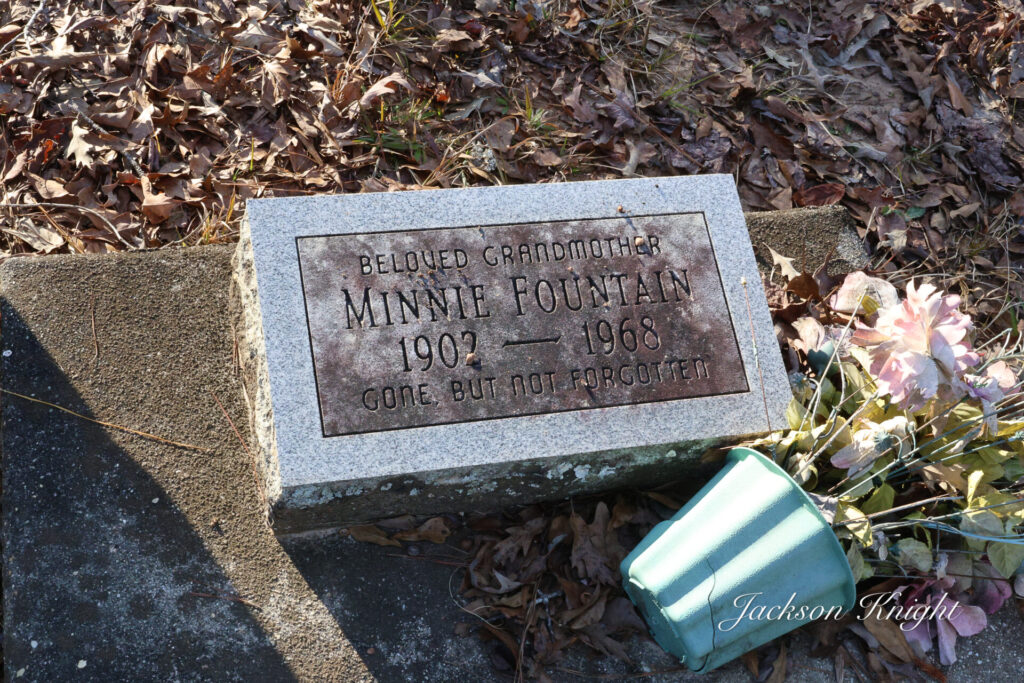
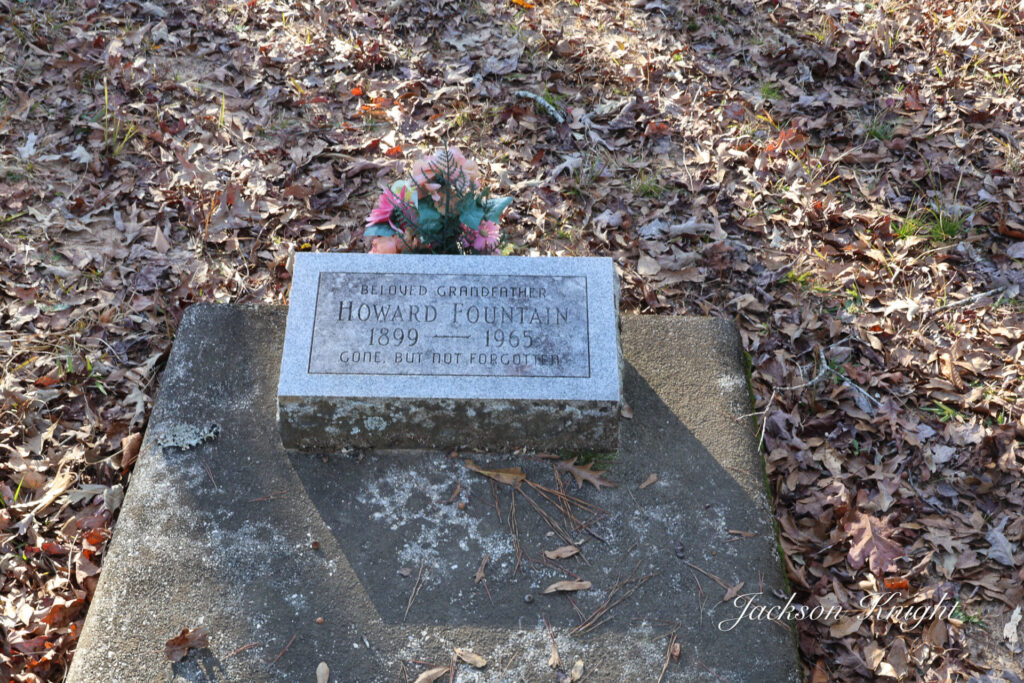
One interesting fact to me was that there was a grave, that the marker appeared to be that of a civil war soldier buried there. His name was Fletcher Fountain. That one I will have to try to research further.
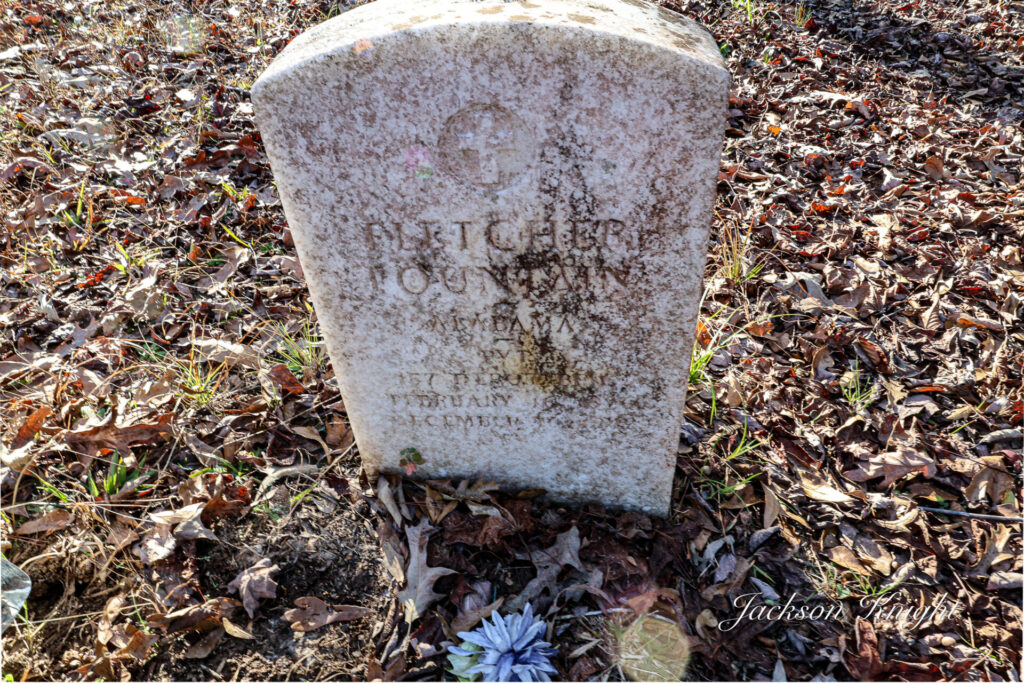
As we continued to talk, I learned that the New Liberty church in Tunnel Springs closed for the pandemic. During that time, it suffered some water damage. Now it is being worked on to re-open soon.
As I we prepared to leave and said our farewells I was swept up in thoughts. We headed out across the Red Hills heading back across to Franklin. As we crossed the miles of rough red dirt roads my mind considered many things. I thought about how many people once lived in what is now nothing more than woods for miles in all directions. I thought about what it must have been like living out there back then. I would imagine that even then although it was a populated area, it would have still been sort of isolated. By that fact I bet that there was a strong sense of community. Then as always, I pictured in my mind travel across the rough hills and hollows. I wondered how many years it was before automobiles came into that part of the world. I could picture a way of life that in many ways was hard. I also pictured a way of life that was fulfilling in many ways. It was no wonder that these two guys I had the privilege to meet today were the great guys they appeared to be. I understood the pride they must have in the fact that their family carries a rich heritage in the Red Hills of Monroe County Alabama. It was definitely a pleasure to meet them, and I look forward to seeing them again one day soon.
